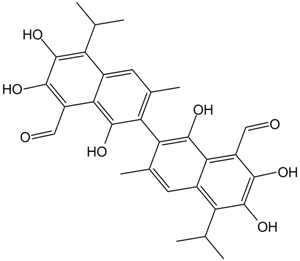Apoptosis
As one of the cellular death mechanisms, apoptosis, also known as programmed cell death, can be defined as the process of a proper death of any cell under certain or necessary conditions. Apoptosis is controlled by the interactions between several molecules and responsible for the elimination of unwanted cells from the body.
Many biochemical events and a series of morphological changes occur at the early stage and increasingly continue till the end of apoptosis process. Morphological event cascade including cytoplasmic filament aggregation, nuclear condensation, cellular fragmentation, and plasma membrane blebbing finally results in the formation of apoptotic bodies. Several biochemical changes such as protein modifications/degradations, DNA and chromatin deteriorations, and synthesis of cell surface markers form morphological process during apoptosis.
Apoptosis can be stimulated by two different pathways: (1) intrinsic pathway (or mitochondria pathway) that mainly occurs via release of cytochrome c from the mitochondria and (2) extrinsic pathway when Fas death receptor is activated by a signal coming from the outside of the cell.
Different gene families such as caspases, inhibitor of apoptosis proteins, B cell lymphoma (Bcl)-2 family, tumor necrosis factor (TNF) receptor gene superfamily, or p53 gene are involved and/or collaborate in the process of apoptosis.
Caspase family comprises conserved cysteine aspartic-specific proteases, and members of caspase family are considerably crucial in the regulation of apoptosis. There are 14 different caspases in mammals, and they are basically classified as the initiators including caspase-2, -8, -9, and -10; and the effectors including caspase-3, -6, -7, and -14; and also the cytokine activators including caspase-1, -4, -5, -11, -12, and -13. In vertebrates, caspase-dependent apoptosis occurs through two main interconnected pathways which are intrinsic and extrinsic pathways. The intrinsic or mitochondrial apoptosis pathway can be activated through various cellular stresses that lead to cytochrome c release from the mitochondria and the formation of the apoptosome, comprised of APAF1, cytochrome c, ATP, and caspase-9, resulting in the activation of caspase-9. Active caspase-9 then initiates apoptosis by cleaving and thereby activating executioner caspases. The extrinsic apoptosis pathway is activated through the binding of a ligand to a death receptor, which in turn leads, with the help of the adapter proteins (FADD/TRADD), to recruitment, dimerization, and activation of caspase-8 (or 10). Active caspase-8 (or 10) then either initiates apoptosis directly by cleaving and thereby activating executioner caspase (-3, -6, -7), or activates the intrinsic apoptotic pathway through cleavage of BID to induce efficient cell death. In a heat shock-induced death, caspase-2 induces apoptosis via cleavage of Bid.
Bcl-2 family members are divided into three subfamilies including (i) pro-survival subfamily members (Bcl-2, Bcl-xl, Bcl-W, MCL1, and BFL1/A1), (ii) BH3-only subfamily members (Bad, Bim, Noxa, and Puma9), and (iii) pro-apoptotic mediator subfamily members (Bax and Bak). Following activation of the intrinsic pathway by cellular stress, pro‑apoptotic BCL‑2 homology 3 (BH3)‑only proteins inhibit the anti‑apoptotic proteins Bcl‑2, Bcl-xl, Bcl‑W and MCL1. The subsequent activation and oligomerization of the Bak and Bax result in mitochondrial outer membrane permeabilization (MOMP). This results in the release of cytochrome c and SMAC from the mitochondria. Cytochrome c forms a complex with caspase-9 and APAF1, which leads to the activation of caspase-9. Caspase-9 then activates caspase-3 and caspase-7, resulting in cell death. Inhibition of this process by anti‑apoptotic Bcl‑2 proteins occurs via sequestration of pro‑apoptotic proteins through binding to their BH3 motifs.
One of the most important ways of triggering apoptosis is mediated through death receptors (DRs), which are classified in TNF superfamily. There exist six DRs: DR1 (also called TNFR1); DR2 (also called Fas); DR3, to which VEGI binds; DR4 and DR5, to which TRAIL binds; and DR6, no ligand has yet been identified that binds to DR6. The induction of apoptosis by TNF ligands is initiated by binding to their specific DRs, such as TNFα/TNFR1, FasL /Fas (CD95, DR2), TRAIL (Apo2L)/DR4 (TRAIL-R1) or DR5 (TRAIL-R2). When TNF-α binds to TNFR1, it recruits a protein called TNFR-associated death domain (TRADD) through its death domain (DD). TRADD then recruits a protein called Fas-associated protein with death domain (FADD), which then sequentially activates caspase-8 and caspase-3, and thus apoptosis. Alternatively, TNF-α can activate mitochondria to sequentially release ROS, cytochrome c, and Bax, leading to activation of caspase-9 and caspase-3 and thus apoptosis. Some of the miRNAs can inhibit apoptosis by targeting the death-receptor pathway including miR-21, miR-24, and miR-200c.
p53 has the ability to activate intrinsic and extrinsic pathways of apoptosis by inducing transcription of several proteins like Puma, Bid, Bax, TRAIL-R2, and CD95.
Some inhibitors of apoptosis proteins (IAPs) can inhibit apoptosis indirectly (such as cIAP1/BIRC2, cIAP2/BIRC3) or inhibit caspase directly, such as XIAP/BIRC4 (inhibits caspase-3, -7, -9), and Bruce/BIRC6 (inhibits caspase-3, -6, -7, -8, -9).
Any alterations or abnormalities occurring in apoptotic processes contribute to development of human diseases and malignancies especially cancer.
References:
1.Yağmur Kiraz, Aysun Adan, Melis Kartal Yandim, et al. Major apoptotic mechanisms and genes involved in apoptosis[J]. Tumor Biology, 2016, 37(7):8471.
2.Aggarwal B B, Gupta S C, Kim J H. Historical perspectives on tumor necrosis factor and its superfamily: 25 years later, a golden journey.[J]. Blood, 2012, 119(3):651.
3.Ashkenazi A, Fairbrother W J, Leverson J D, et al. From basic apoptosis discoveries to advanced selective BCL-2 family inhibitors[J]. Nature Reviews Drug Discovery, 2017.
4.McIlwain D R, Berger T, Mak T W. Caspase functions in cell death and disease[J]. Cold Spring Harbor perspectives in biology, 2013, 5(4): a008656.
5.Ola M S, Nawaz M, Ahsan H. Role of Bcl-2 family proteins and caspases in the regulation of apoptosis[J]. Molecular and cellular biochemistry, 2011, 351(1-2): 41-58.
What is Apoptosis? The Apoptotic Pathways and the Caspase Cascade
أهداف لـ نبسب؛ Apoptosis
- Pyroptosis(15)
- Caspase(77)
- 14.3.3 Proteins(3)
- Apoptosis Inducers(71)
- Bax(15)
- Bcl-2 Family(136)
- Bcl-xL(13)
- c-RET(15)
- IAP(32)
- KEAP1-Nrf2(73)
- MDM2(21)
- p53(137)
- PC-PLC(6)
- PKD(8)
- RasGAP (Ras- P21)(2)
- Survivin(8)
- Thymidylate Synthase(12)
- TNF-α(141)
- Other Apoptosis(1145)
- Apoptosis Detection(0)
- Caspase Substrate(0)
- APC(6)
- PD-1/PD-L1 interaction(60)
- ASK1(4)
- PAR4(2)
- RIP kinase(47)
- FKBP(22)
منتجات لـ نبسب؛ Apoptosis
- القط. رقم اسم المنتج بيانات
-
GC10610
Adapalene
Adapalene (CD271) ، وهو جيل ثالث من الريتينويد الاصطناعية ، يستخدم على نطاق واسع في البحث عن حب الشباب
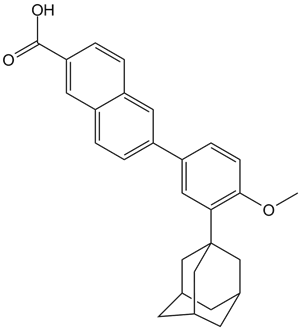
-
GC46798
Adapalene-d3
An internal standard for the quantification of adapalene

-
GC13959
Adarotene
An atypical retinoid
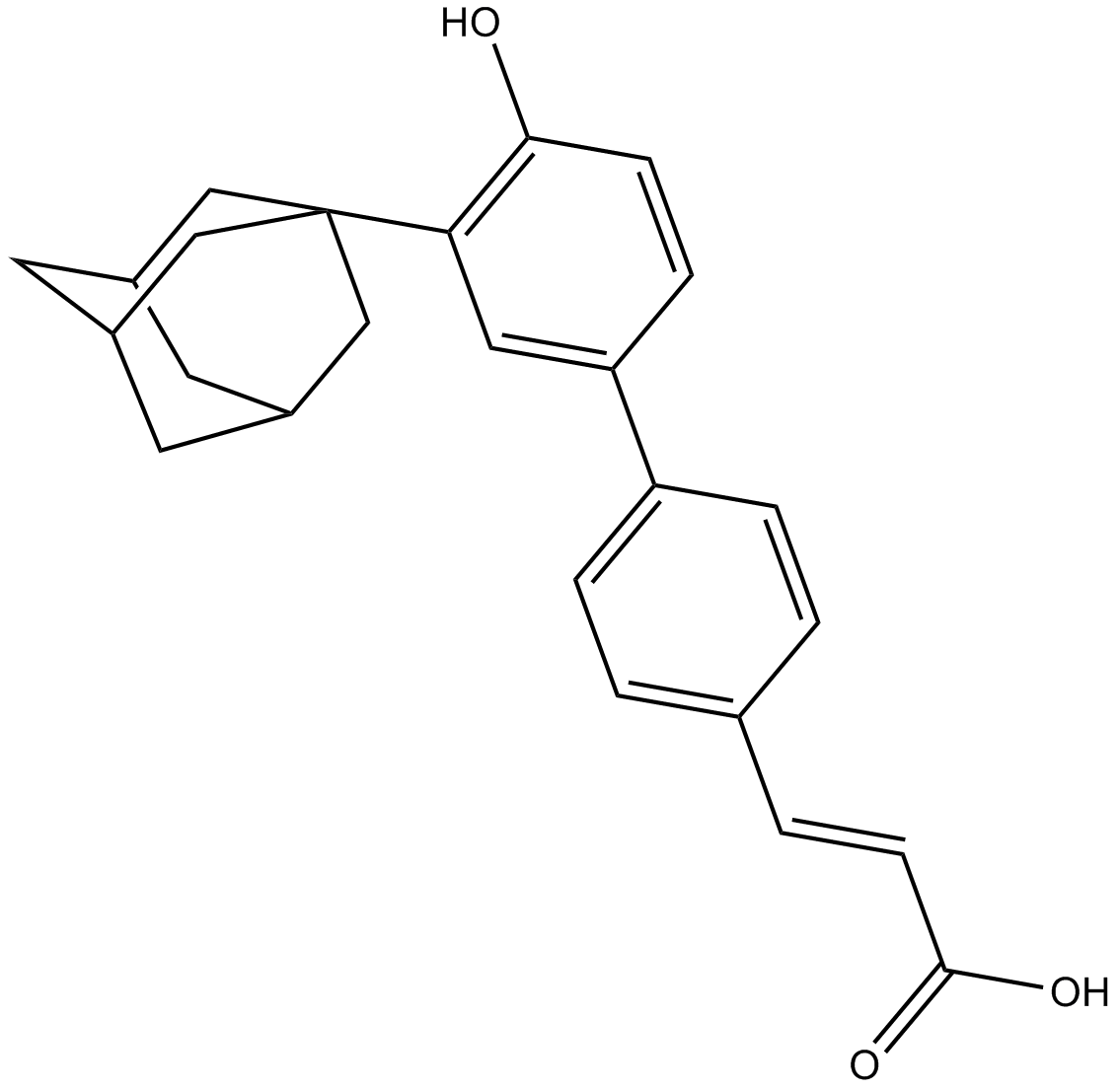
-
GC65880
ADH-6 TFA
ADH-6 TFA هو مركب ثلاثي إيثيل أميد. يُلغي ADH-6 التجميع الذاتي للمجال الفرعي التجميعي النواة للطفرة p53 DBD. يستهدف ADH-6 TFA ويفصل تجمعات p53 الطافرة في الخلايا السرطانية البشرية ، والتي تعيد نشاط النسخ p53' ؛ مما يؤدي إلى توقف دورة الخلية وموت الخلايا المبرمج. ADH-6 TFA لديه القدرة على البحث عن أمراض السرطان.
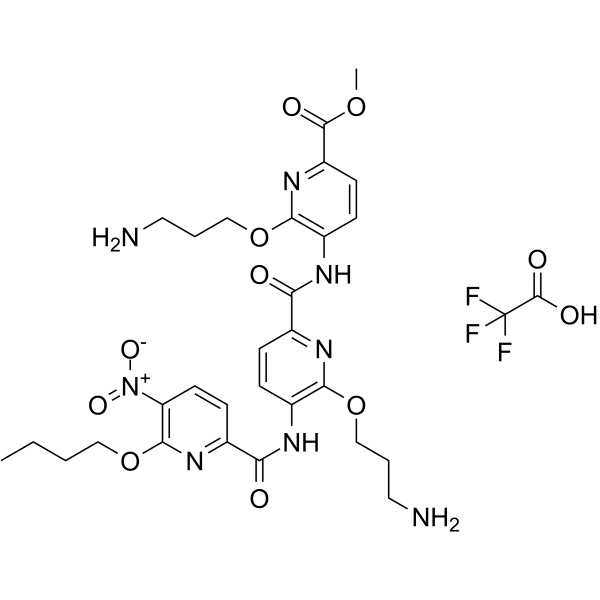
-
GC42735
Adipostatin A
Adipostatin A (Adipostatin A) هو مثبط الجلسرين -3 فوسفات ديهيدروجينيز (GPDH) مع IC50 من 4.1 μ ؛ M.

-
GC11892
AEE788 (NVP-AEE788)
AEE788 (NVP-AEE788) هو مثبط لـ EGFR و ErbB2 بقيم IC50 من 2 و 6 نانومتر ، على التوالي.
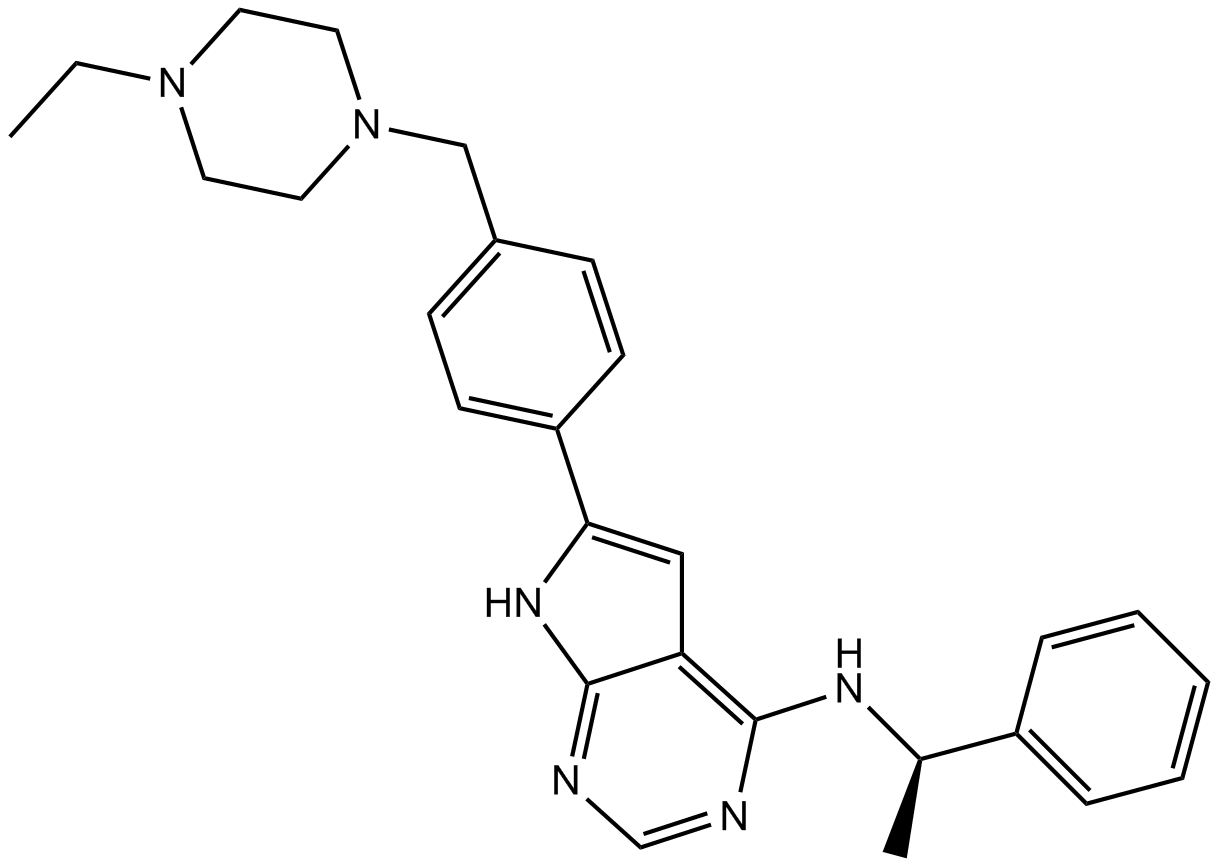
-
GC42743
AEM1
AEM1 هو مثبط Nrf2يقلل AEM1 من تعبيرات الجينات المعتمدة على Nrf2 في خلايا A549 ويمنع نمو خلايا A549 في المختبر وفي الجسم الحي

-
GC13168
AG 825
AG 825 (Tyrphostin AG 825) هو مثبط ErbB2 انتقائي وتنافسي لـ ATP والذي يثبط فسفرة التيروزين ، مع IC50 من 0.35 ميكرومتر.
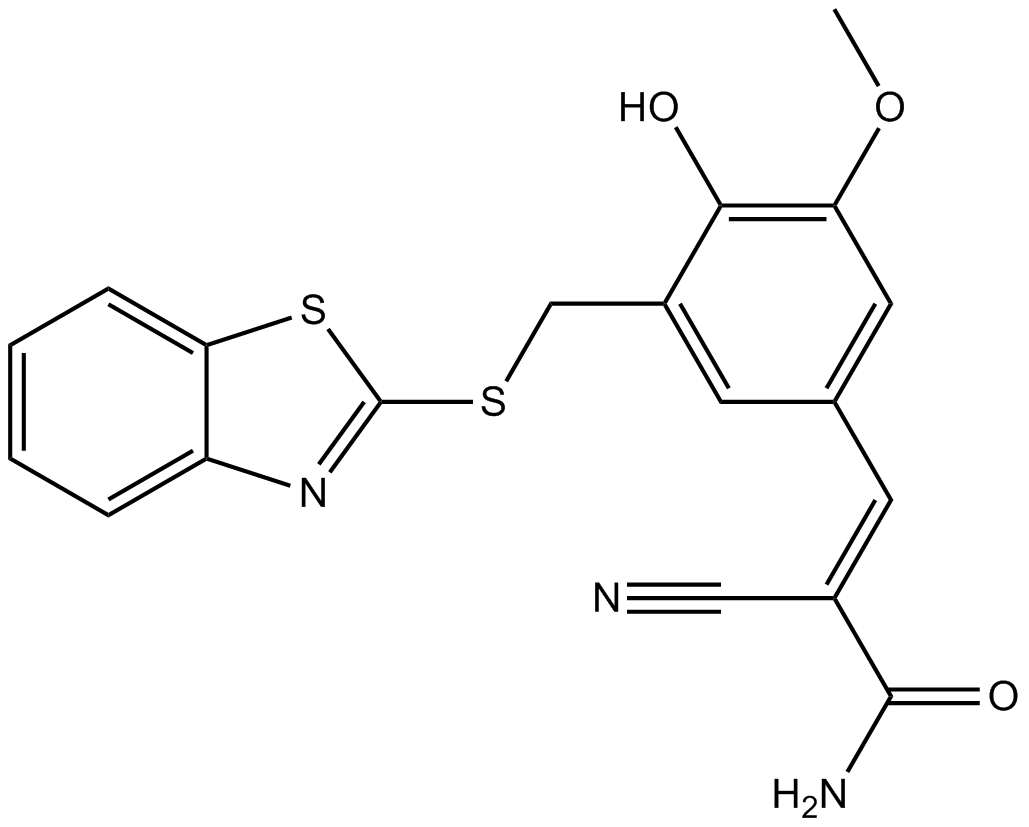
-
GC13697
AG-1024
AG-1024 (Tyrphostin AG 1024) هو مثبط IGF-1R قابل للعكس وتنافسي وانتقائي مع IC 50 من 7 ميكرومتر.
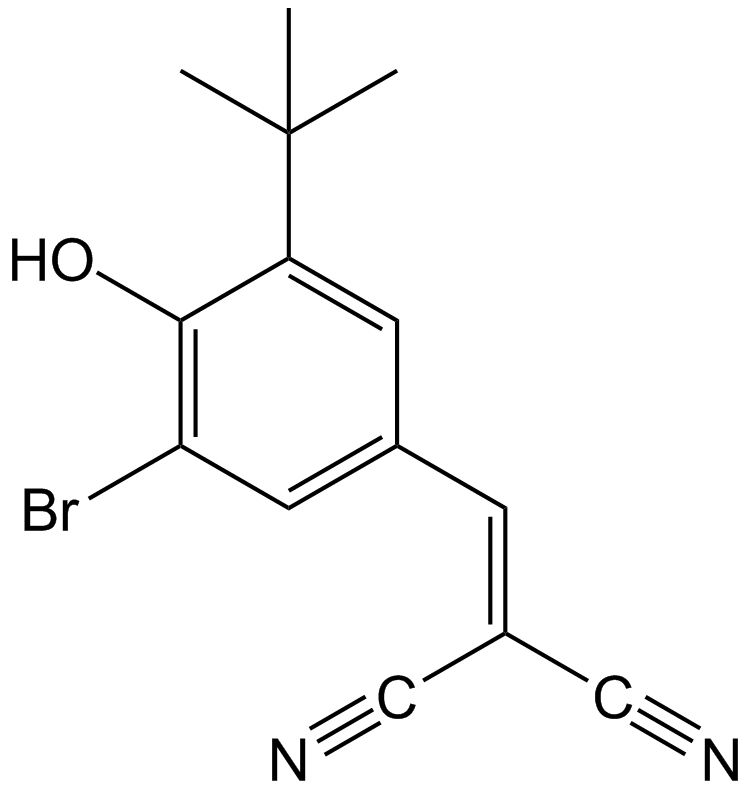
-
GC17881
AGK 2
AGK 2 هو مثبط انتقائي لـ SIRT2 مع IC 50 من 3.5 ميكرومتر. AGK 2 يمنع SIRT1 و SIRT3 مع IC50s من 30 و 91 ميكرومتر ، على التوالي.
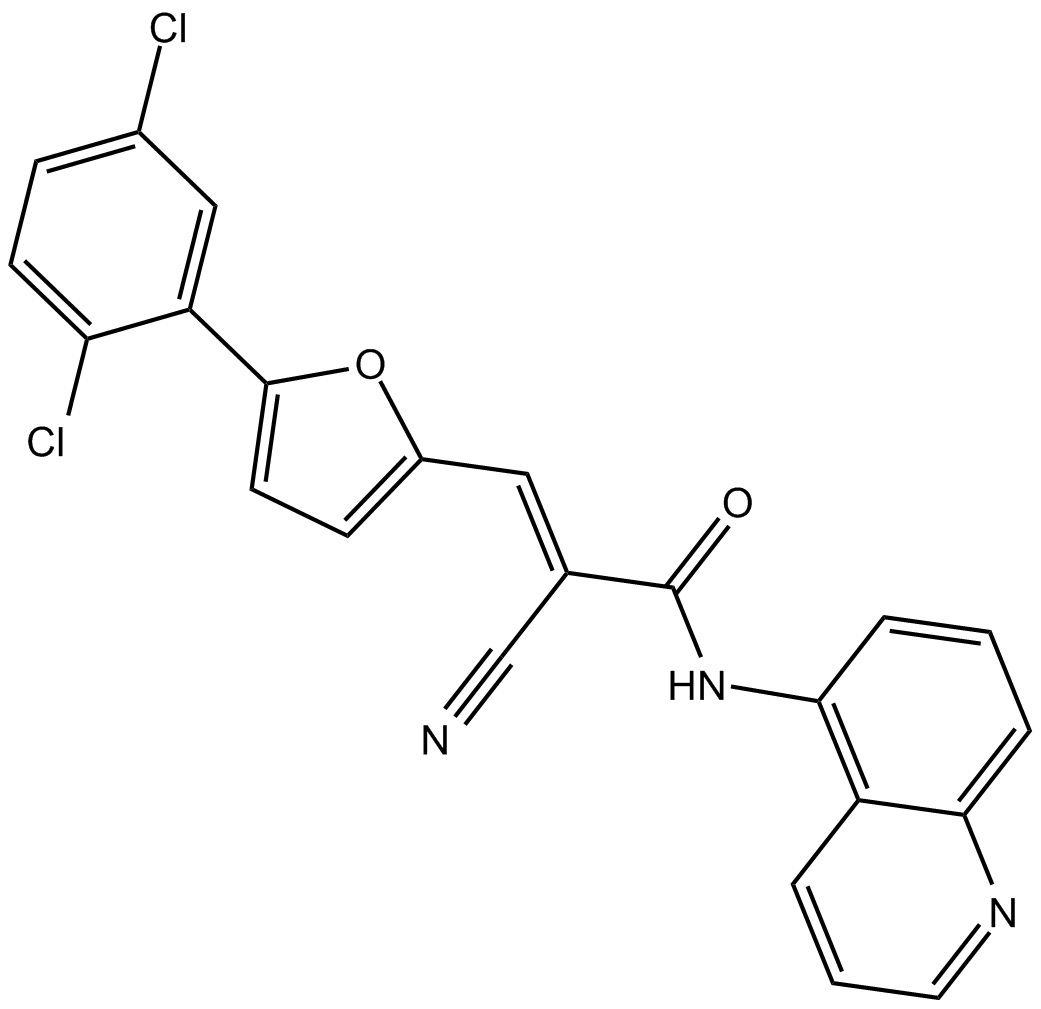
-
GC39584
AGN194204
AGN194204 (IRX4204) هو محفز RXR فعال عن طريق الفم وانتقائي بقيم Kd 0.4 نانومتر و 3.6 نانومتر و 3.8 نانومتر و EC50s تبلغ 0.2 نانومتر و 0.8 نانومتر و 0.08 نانومتر لـ RXRα، RXRβ، و RXRγ على التوالي.
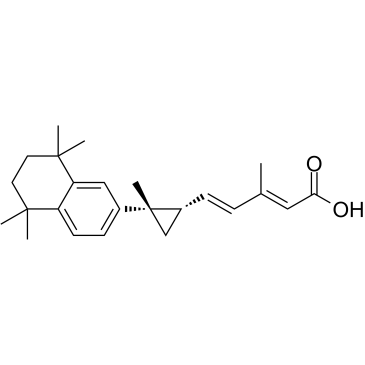
-
GC16120
AI-3
Nrf2/Keap1 and Keap1/Cul3 interaction inhibitor
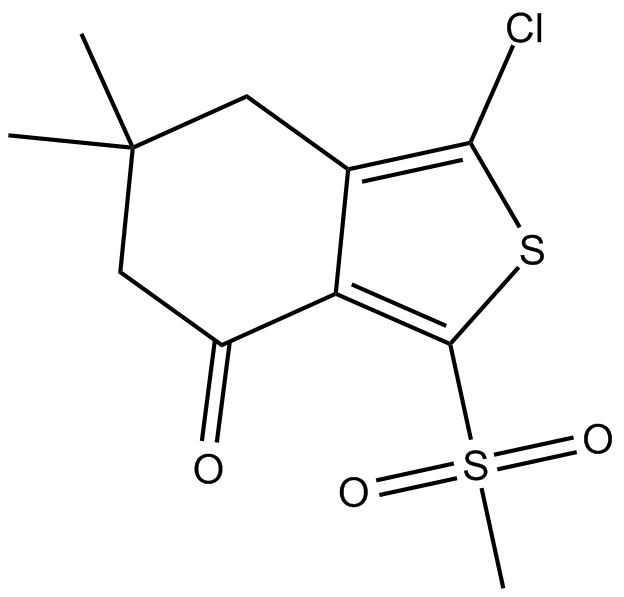
-
GC46821
Ajoene
Ajoene ، مركب مشتق من الثوم ، هو عامل مضاد للتخثر ومضاد للفطريات

-
GC39620
AKOS-22
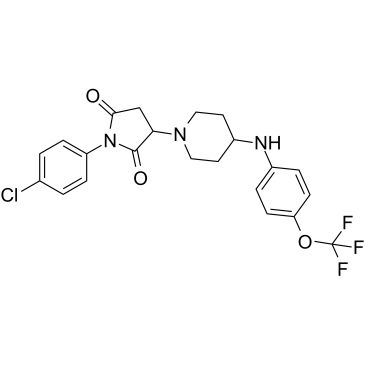
-
GC11589
AKT inhibitor VIII
A potent inhibitor of Akt1 and Akt2

-
GC35275
AKT-IN-3
AKT-IN-3 (المركب E22) هو مثبط قوي ، فعال عن طريق الفم منخفض hERG blocking Akt ، مع 1.4 نانومتر و 1.2 نانومتر و 1.7 نانومتر لـ Akt1 و Akt2 و Akt3 ، على التوالييُظهر AKT-IN-3 (المركب E22) أيضًا نشاطًا مثبطًا جيدًا ضد كينازات عائلة AGC الأخرى ، مثل PKA و PKC و ROCK1 و RSK1 و P70S6K و SGKيحث AKT-IN-3 (مركب E22) على موت الخلايا المبرمج ويمنع ورم خبيث للخلايا السرطانية
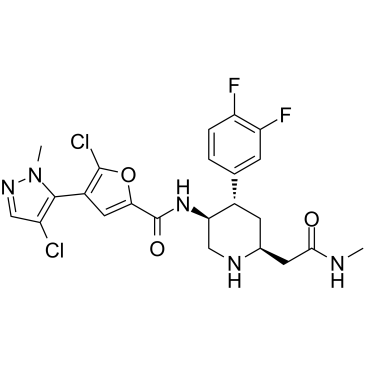
-
GC49773
Albendazole sulfone-d3
An internal standard for the quantification of albendazole sulfone

-
GC48848
Albendazole-d7
ألبيندازول- d7 (SKF-62979-d7) هو الديوتيريوم المسمى ألبيندازول

-
GC41080
Albofungin
Albofungin is a xanthone isolated from A.

-
GC16597
Alda 1
Alda 1 هو ناهض ALDH2 قوي وانتقائي ، ينشط ALDH2 من النوع البري ويعيد النشاط القريب من النوع البري إلى ALDH2 * 2.
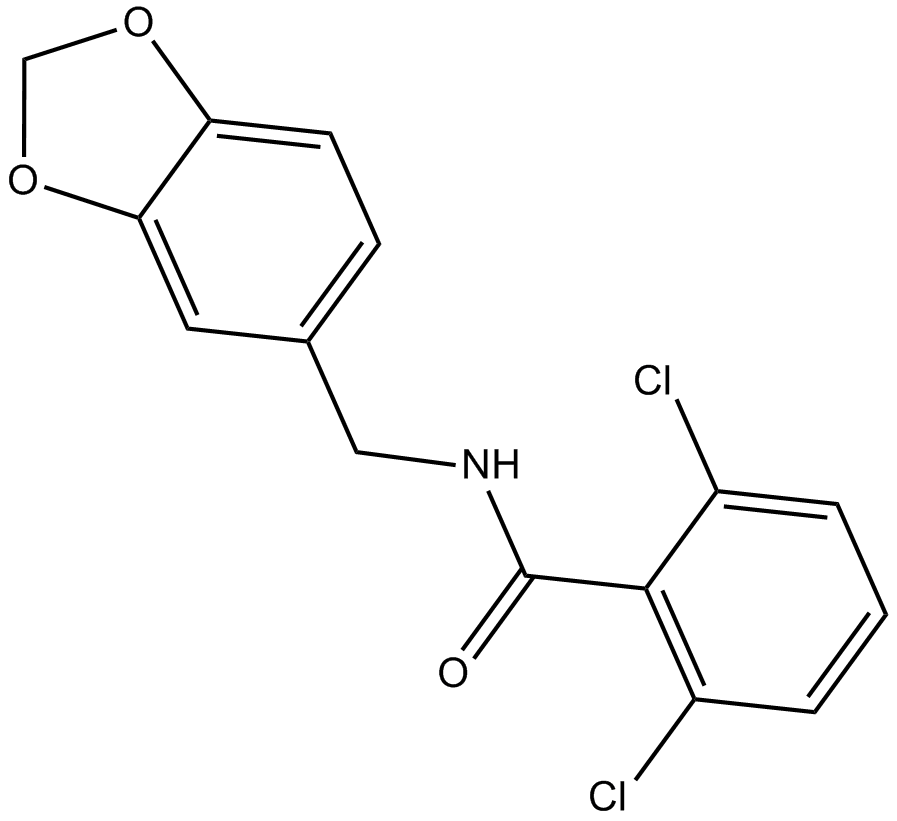
-
GC35288
Alkannin
الكانين ، الموجود في Alkanna tinctoria ، يستخدم كملون غذائي.
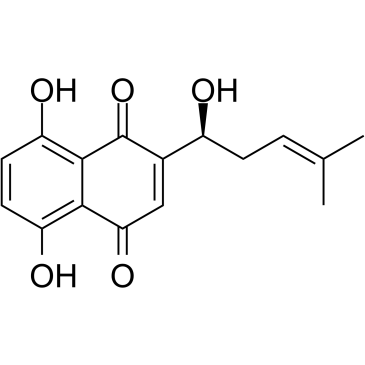
-
GC49393
all-trans-13,14-Dihydroretinol
A metabolite of all-trans retinoic acid

-
GC32127
Alofanib (RPT835)
Alofanib (RPT835) (RPT835) هو مثبط خيفي قوي وانتقائي لمستقبل عامل نمو الخلايا الليفية 2 (FGFR2).

-
GC14314
Aloperine
Aloperine هو قلويد في نباتات الصفيراء مثل Sophora alopecuroides L ، والتي أظهرت خصائص مضادة للسرطان ومضادة للالتهابات ومضادة للفيروسات
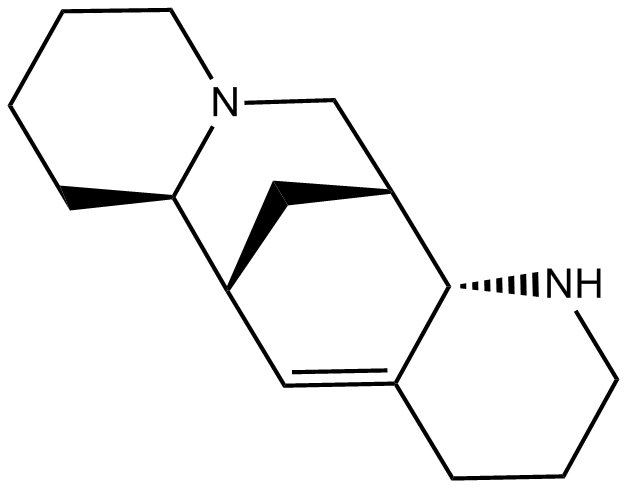
-
GC35306
alpha-Mangostin
alpha-Mangostin (α-Mangostin) عبارة عن زانثون غذائي له أنشطة بيولوجية واسعة ، مثل مضادات الأكسدة ، ومضادات الحساسية ، ومضادة للفيروسات ، ومضادة للبكتيريا ، ومضادة للالتهابات ومضادة للسرطانوهو مثبط لـ IDH1 المتحولة (IDH1-R132H) مع Ki يبلغ 2.85 ميكرومتر
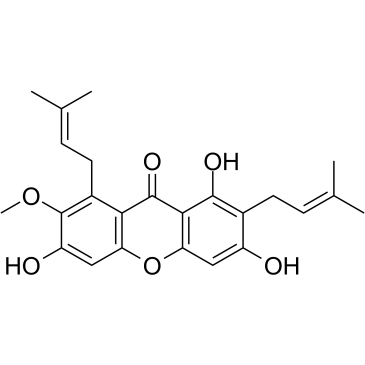
-
GC18437
Alternariol monomethyl ether
يعتبر Alternariol monomethyl ether ، المعزول من جذور Anthocleista djalonensis (Loganiaceae) ، علامة تصنيفية مهمة لأنواع النباتات.
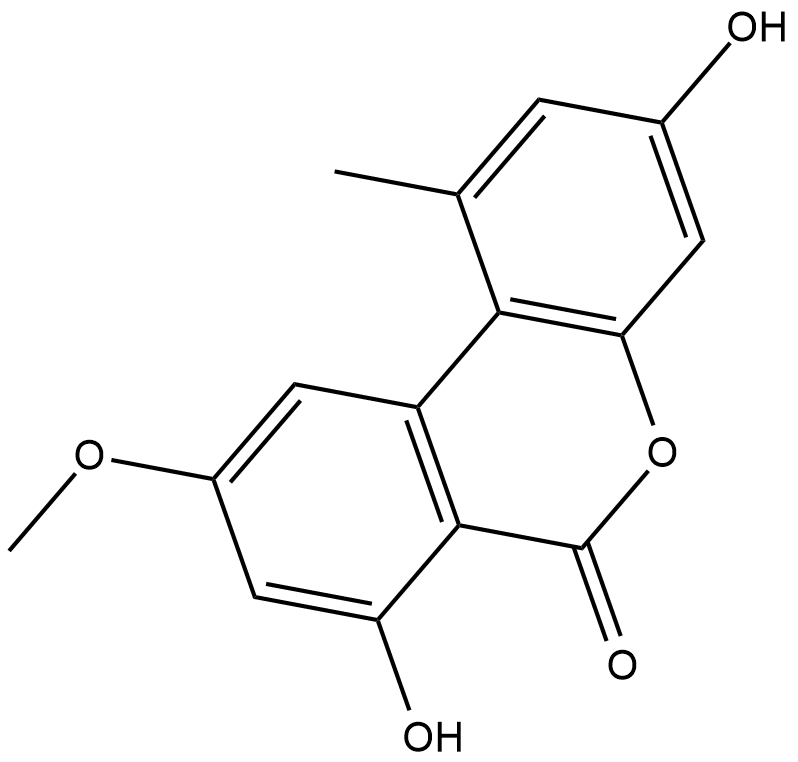
-
GC33356
AM-8735
AM-8735 هو مثبط قوي وانتقائي MDM2 مع IC 50 من 25 نانومتر.
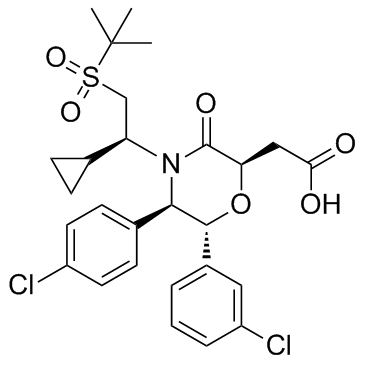
-
GC42776
Amarogentin
Amarogentin هو جليكوسيد سيكوريدويد الذي يتم استخراجه بشكل أساسي من جذور Swertia و Gentiana

-
GN10484
Amentoflavone
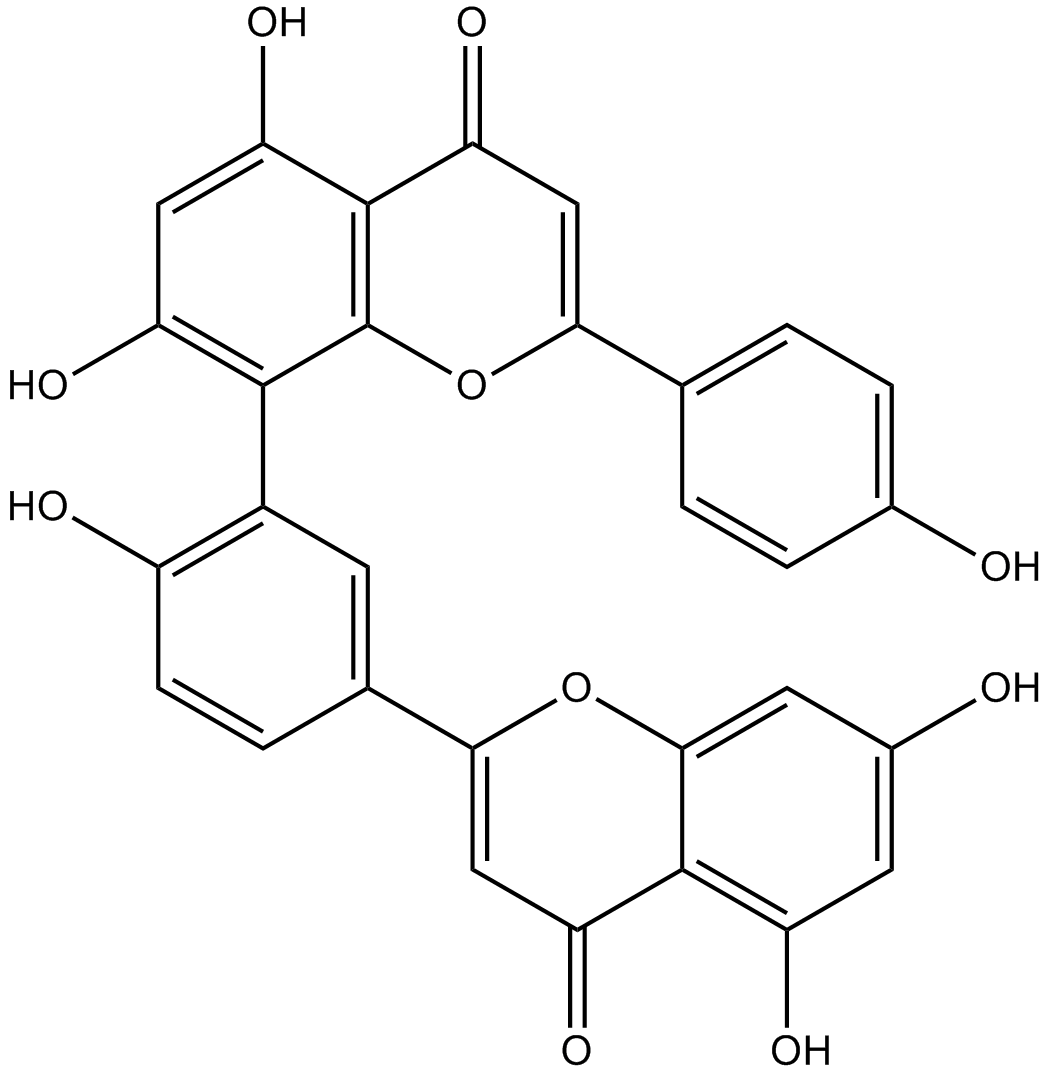
-
GC42783
Ametantrone
Ametantrone (NSC 196473) هو عامل مضاد للأورام يتحول إلى DNA ويحث على كسر الحمض النووي بوساطة topoisomerase II (TOP2).

-
GC19452
AMG-176
AMG-176 (AMG-176) هو مثبط قوي وانتقائي وفعال عن طريق الفم MCL-1 ، مع Ki من 0.13 نانومتر.
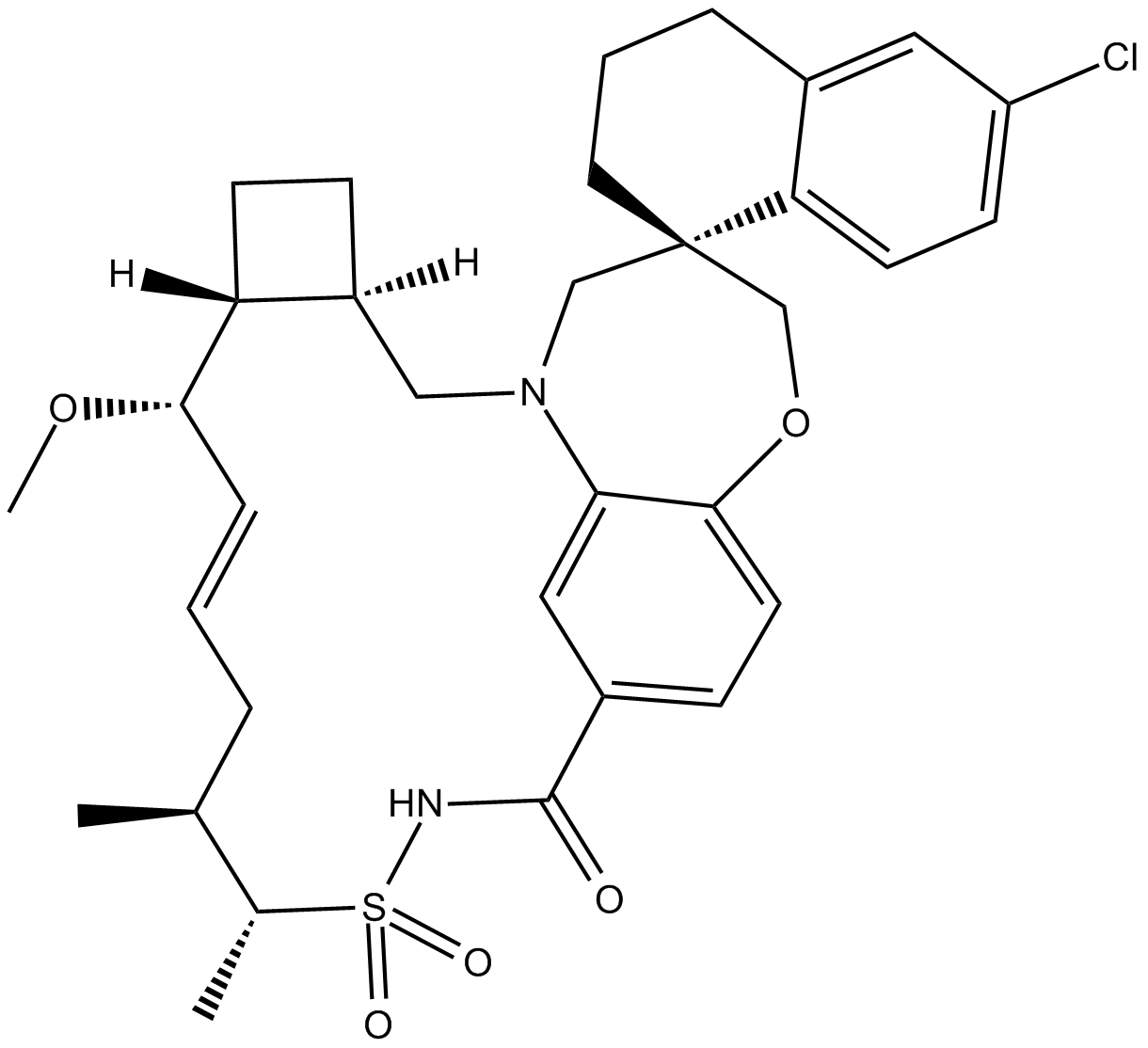
-
GC15828
AMG232
AMG232 (AMG 232) هو مثبط فعال وانتقائي ومتوفر عن طريق الفم لتفاعل p53-MDM2 ، مع IC50 يبلغ 0.6 نانومتر. يرتبط AMG232 بـ MDM2 بـ Kd 0.045 نانومتر.
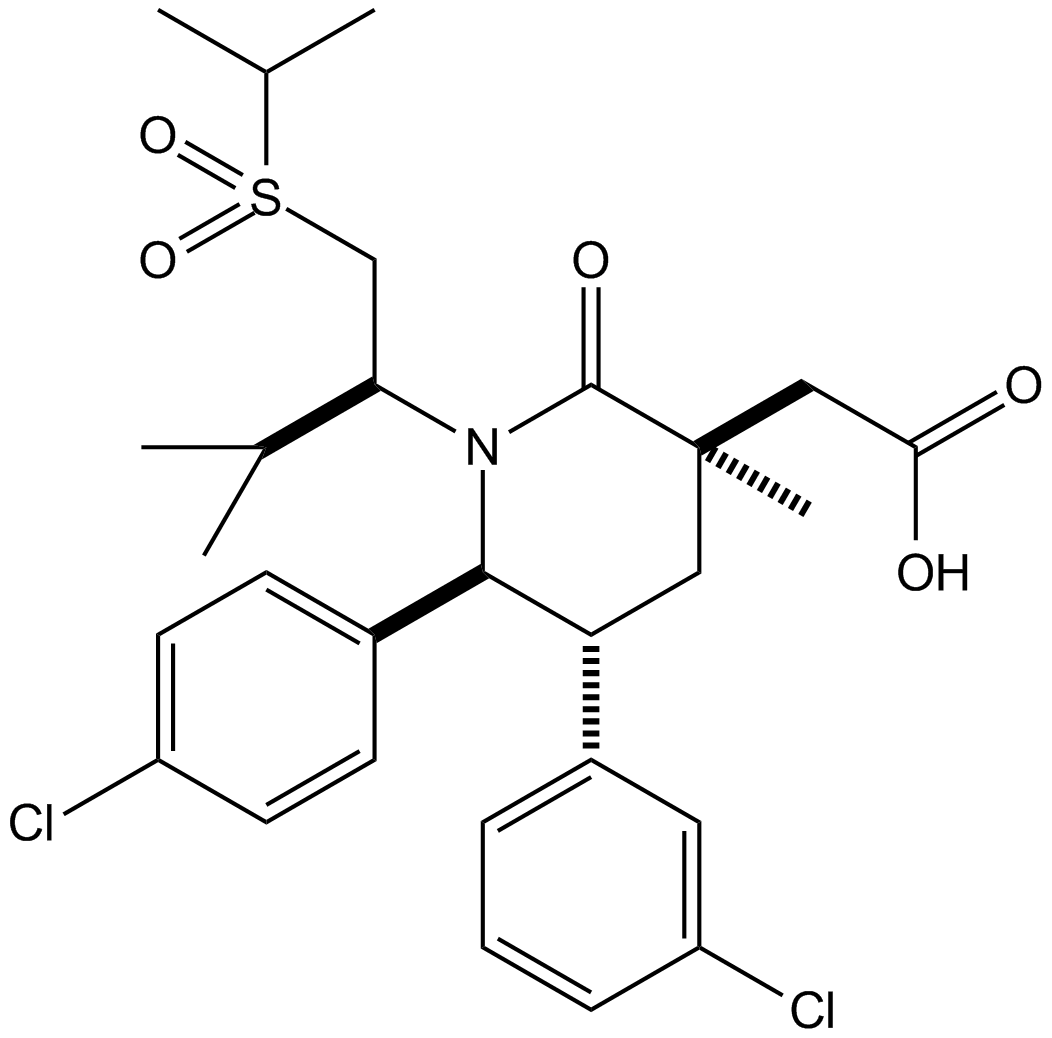
-
GC42785
Amifostine (hydrate)
أميفوستين (هيدرات) (WR2721 ثلاثي هيدرات) هو عامل واقي للخلايا واسع الطيف وواقي إشعاعي. يحمي أميفوستين (هيدرات) بشكل انتقائي الأنسجة الطبيعية من التلف الناتج عن العلاج الإشعاعي والكيميائي. أميفوستين (هيدرات) هو عامل محفز لنقص الأكسجة - α ؛ 1 (HIF-α ؛ 1) ومحفز p53. يحمي أميفوستين (هيدرات) الخلايا من التلف عن طريق تنظيف الجذور الحرة المشتقة من الأكسجين. يقلل أميفوستين (هيدرات) من التسمم الكلوي وله تأثير مضاد لتكوّن الأوعية.

-
GC61804
Amifostine thiol
أميفوستين ثيول (WR-1065) هو مستقلب نشط للوقاية من السيتوبروتكتور أميفوستينAmifostine thiol هو عامل واقي للخلايا يتمتع بقدرات واقية من الأشعةينشط Amifostine thiol p53 من خلال مسار تأشير يعتمد على JNK
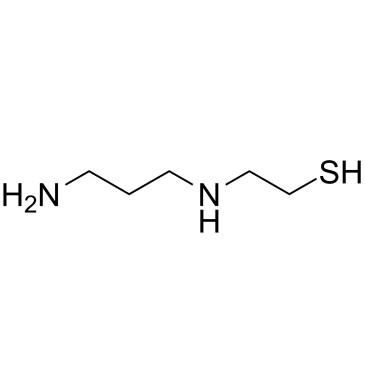
-
GC12051
Amiloride HCl dihydrate
Amiloride HCl dihydrate (MK-870 hydrochloride dihydrate) هو مثبط لكل من قناة الصوديوم الظهارية (ENaC [1]) ومستقبل منشط البلازمينوجين من نوع urokinase (uTPA [2]).
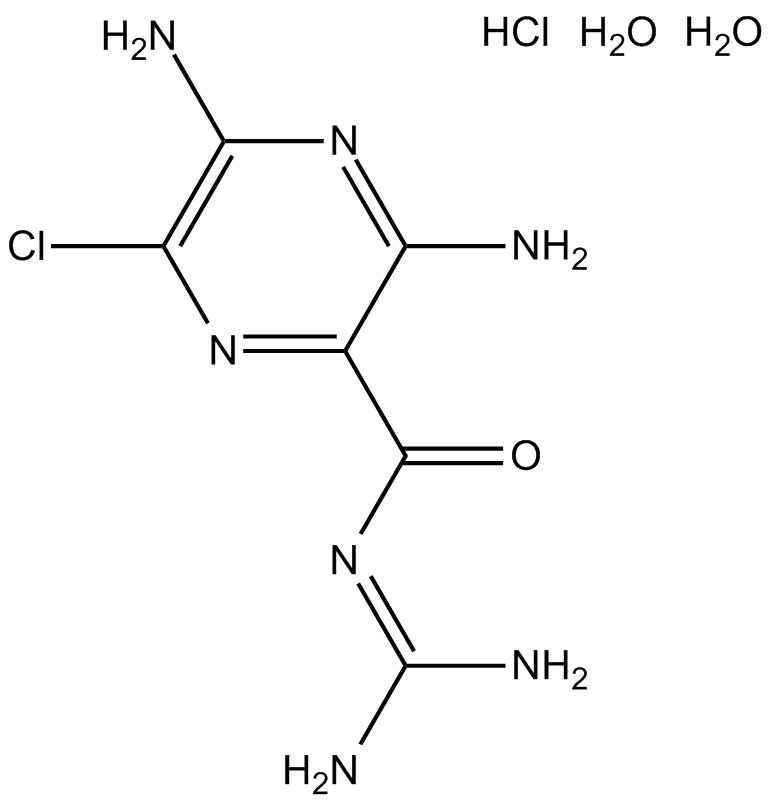
-
GC63932
Amsilarotene
Amsilarotene (TAC-101؛ Am 555S) ، ريتينويد صناعي فعال عن طريق الفم ، له تقارب انتقائي لمستقبل حمض الريتينويك α ؛ (RAR-α ؛) الربط بـ Ki 2.4 ، 400 نانومتر لـ RAR-α ؛ و RAR-β ؛. يستحث الأمسيلاروتين موت الخلايا المبرمج لسرطان المعدة البشري وسرطان الخلايا الكبدية وخلايا سرطان المبيض. يمكن استخدام الأمسيلاروتين في أبحاث السرطان.
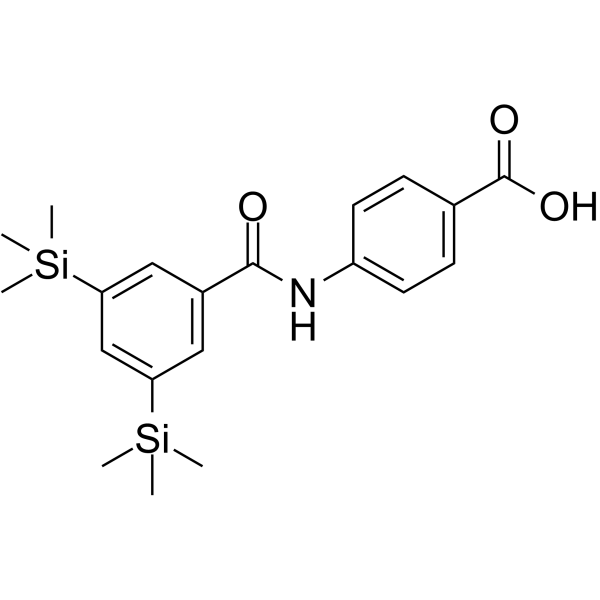
-
GC16391
Amuvatinib (MP-470, HPK 56)
A multi-targeted RTK inhibitor
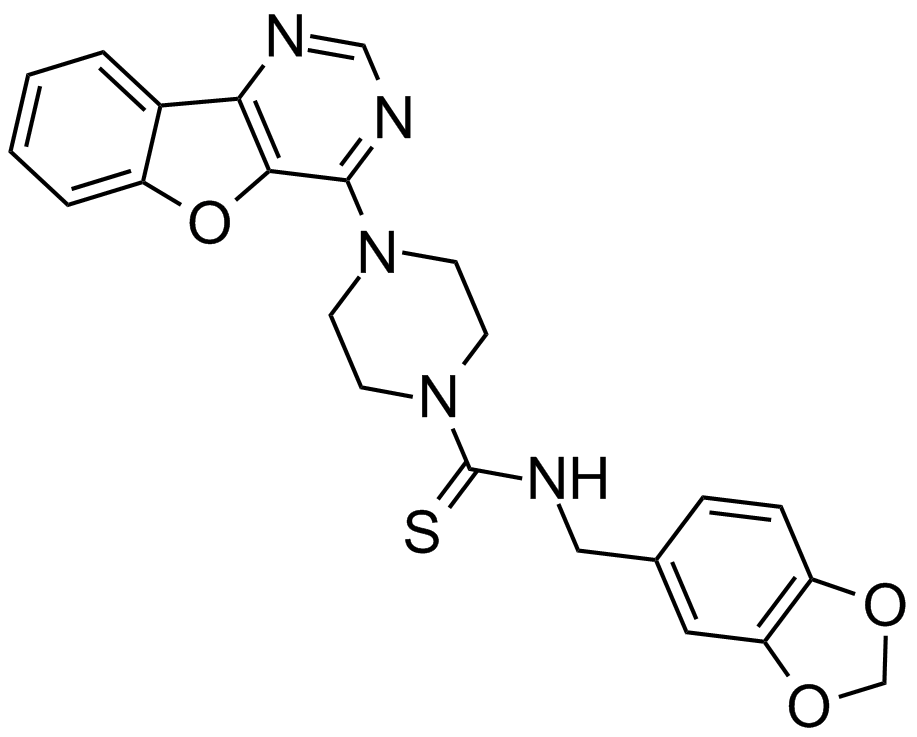
-
GC48339
Amycolatopsin A
A macrolide polyketide with antimycobacterial and anticancer activities

-
GC48341
Amycolatopsin B
A bacterial metabolite

-
GC48350
Amycolatopsin C
A polyketide macrolide with antimycobacterial and anticancer activities

-
GC42806
Andrastin A
Andrastin A is a meroterpenoid farnesyltransferase inhibitor.

-
GN10045
Angelicin
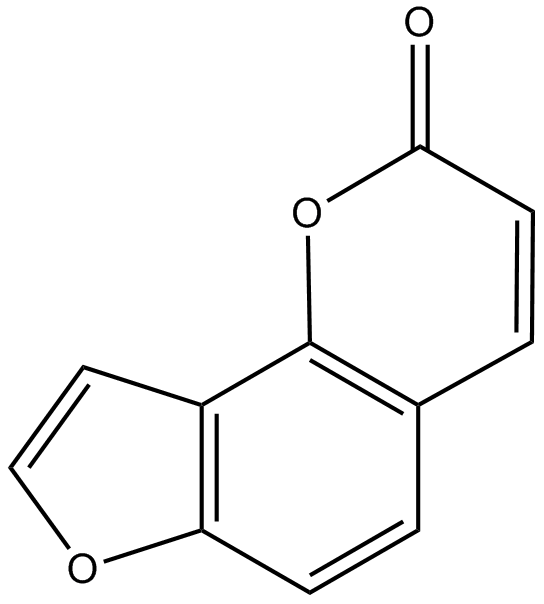
-
GC60584
Angiotensin II human acetate
أسيتات أنجيوتنسين 2 البشري (أنجيوتنسين 2) هو مضيق للأوعية وببتيد رئيسي نشط بيولوجيًا لنظام الرينين / الأنجيوتنسين
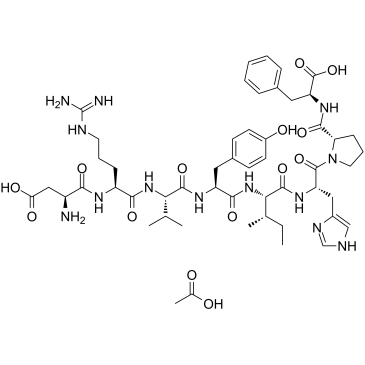
-
GC42813
Anguinomycin A
Anguinomycin A is an antibiotic first isolated from a Streptomyces sp.

-
GC40614
Anhydroepiophiobolin A
Anhydroepiophiobolin A ، وهو نظير لـ Ophiobolin A ، هو مثبط قوي لعملية التمثيل الضوئي (I50s من 6.1 و 1 مم من أجل التمثيل الضوئي في كلوريلا والسبانخ ، على التوالي).

-
GC40214
Anhydroophiobolin A
Anhydroophiobolin A هو مثبط قوي لعملية التمثيل الضوئي مع IC50s من 77 و 14 ملي مول في التمثيل الضوئي للكلوريلا والسبانخ ، على التوالي

-
GC11559
Anisomycin
محفز JNK، قوي ومحدد بشكل كبير
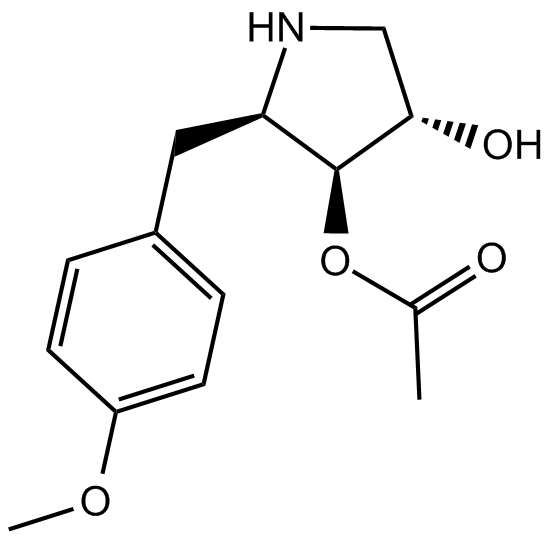
-
GC49259
Antagonist G (trifluoroacetate salt)
A neuropeptide antagonist

-
GC66337
Anti-Mouse PD-L1 Antibody
الجسم المضاد Anti-Mouse PD-L1 هو مثبط للجسم المضاد PD-L1 IgG2b مضاد للفأر مشتق من الجرذ المضيف.
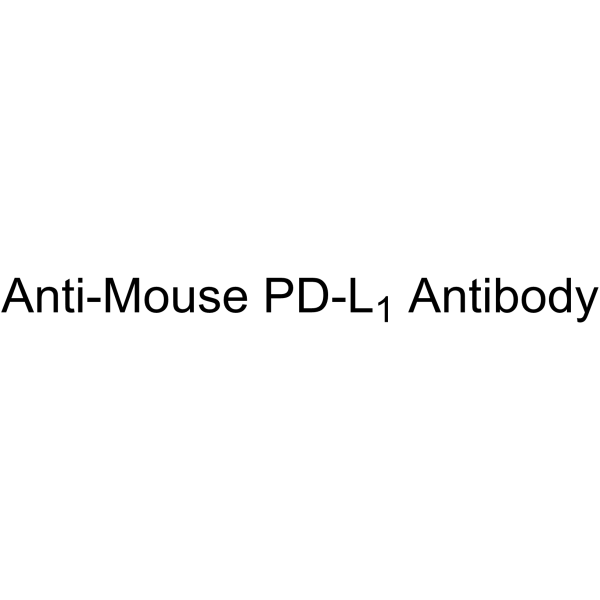
-
GC35361
Antineoplaston A10
Antineoplaston A10 ، مادة موجودة بشكل طبيعي في جسم الإنسان ، هي مثبط للرأس يحتمل أن يكون لعلاج الورم الدبقي والورم الليمفاوي والورم النجمي وسرطان الثدي
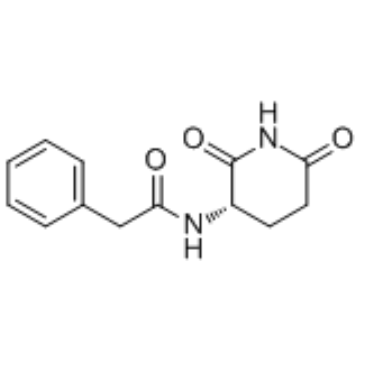
-
GC34172
AP1867
AP1867 عبارة عن يجند صناعي موجه بـ FKBP12F36V
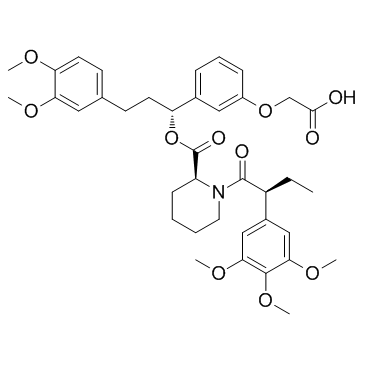
-
GC61745
AP1867-2-(carboxymethoxy)
AP1867-2- (كاربوكسي ميثوكسي) ، AP1867 (رابط تركيبي موجه من FKBP12F36V) ، يرتبط برباط CRBN عبر رابط لتشكيل جزيئات dTAG

-
GC15586
AP1903
AP1903 (AP1903) هو عامل dimerizer يعمل عن طريق ربط مجالات FKBP. يعمل AP1903 (AP1903) على إضعاف مفتاح الانتحار Caspase 9 ويسبب موت الخلايا المبرمج بسرعة.
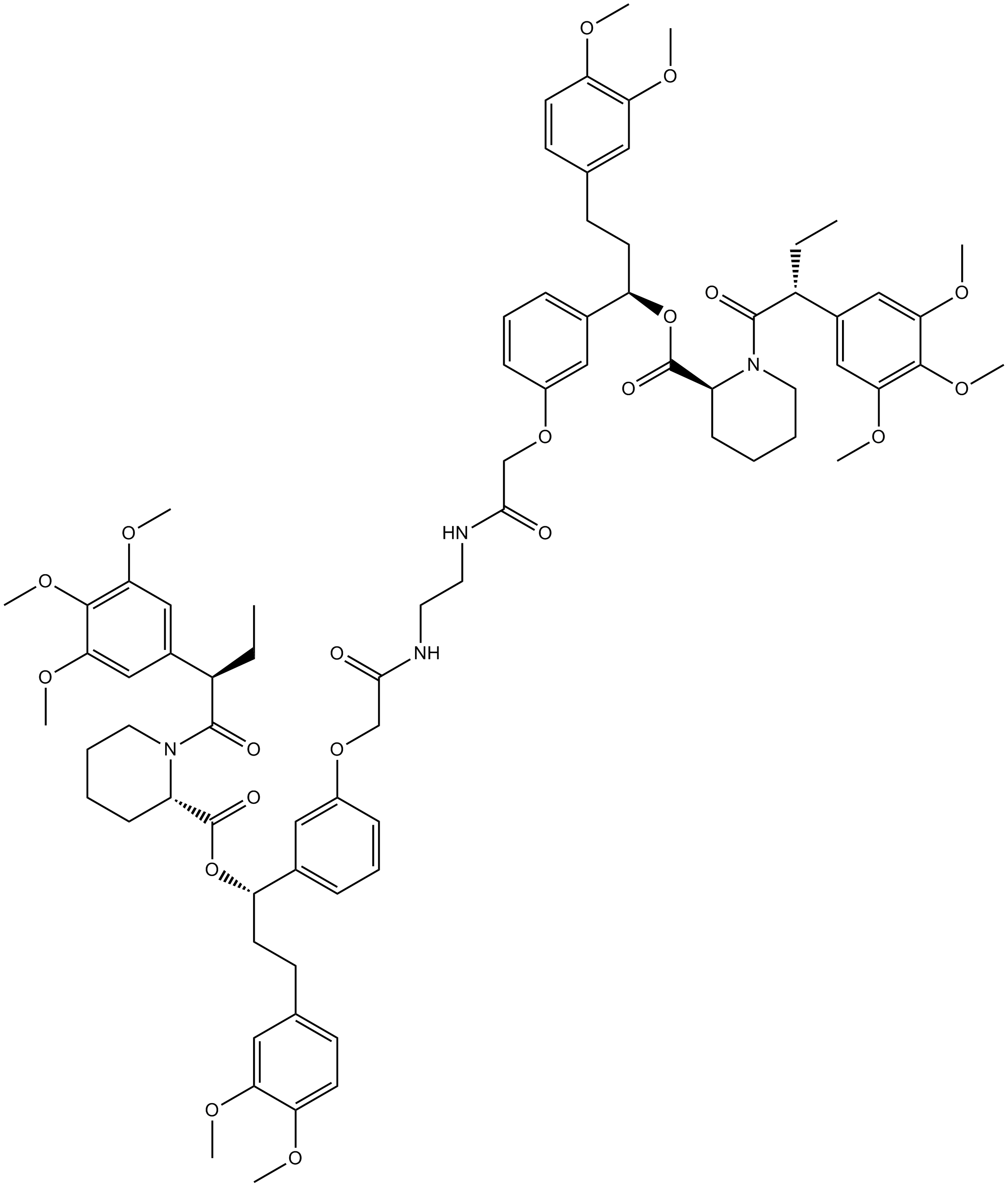
-
GC14498
AP20187
AP20187 (B / B Homodimerizer) عبارة عن يجند منفذ للخلايا يستخدم لتقليل بروتينات اندماج بروتين FK506 (FKBP) وبدء سلاسل الإشارات البيولوجية والتعبير الجيني أو تعطيل تفاعلات البروتين والبروتين
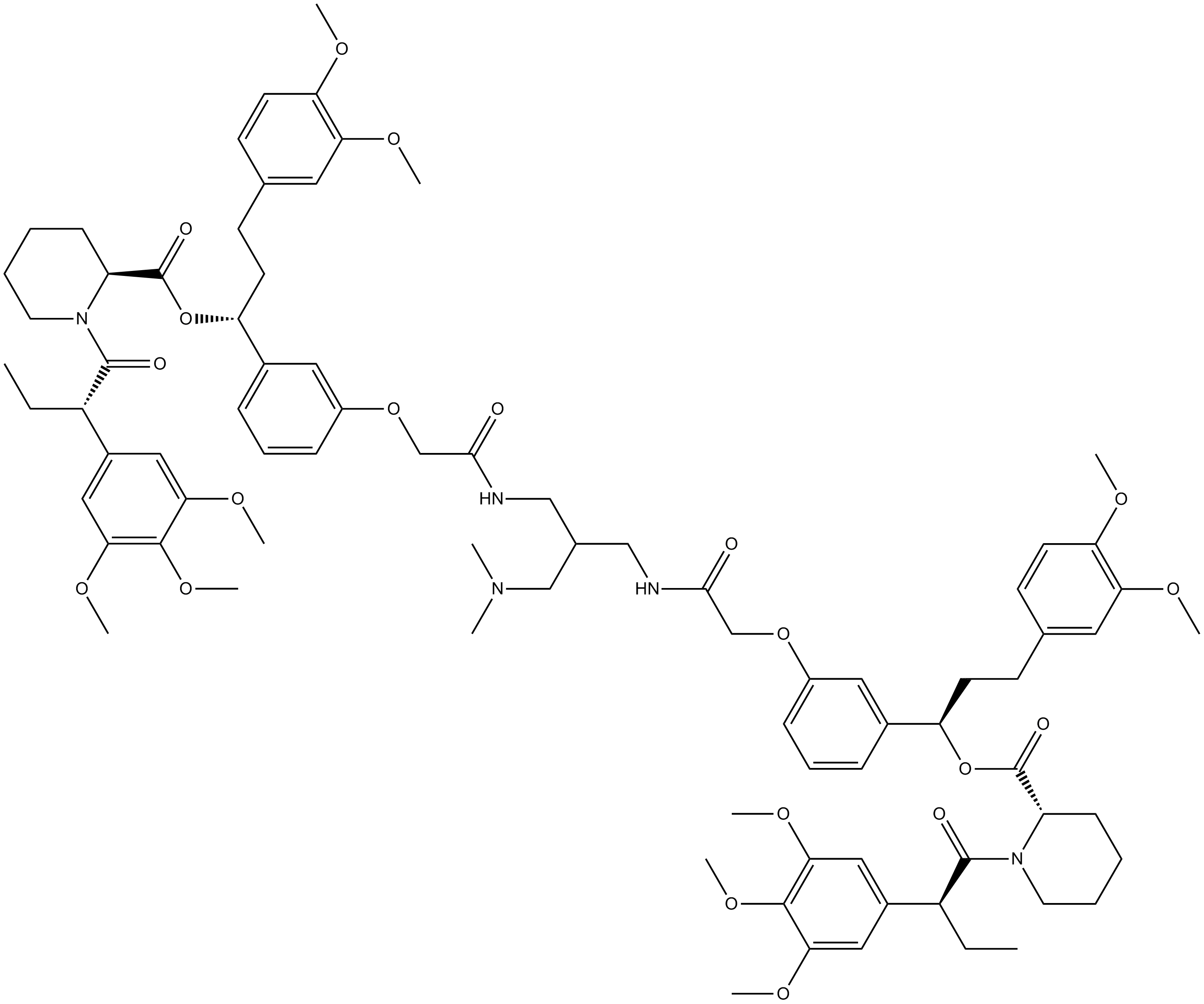
-
GC18518
Apcin
Apcin ، يجند Cdc20 ، هو مركب / سيكلوسوم (APC / C (Cdc20)) مثبط نشاط E3 ligase قوي وتنافسييمنع Apcin بشكل تنافسي التواجد في كل مكان المعتمد على APC / C من خلال الارتباط بـ Cdc20 ومنع التعرف على الركيزةيحتل Apcin جيب ربط D-box على الوجه الجانبي لمجال WD40 ويمكنه إطالة الانقسام الفتيلي
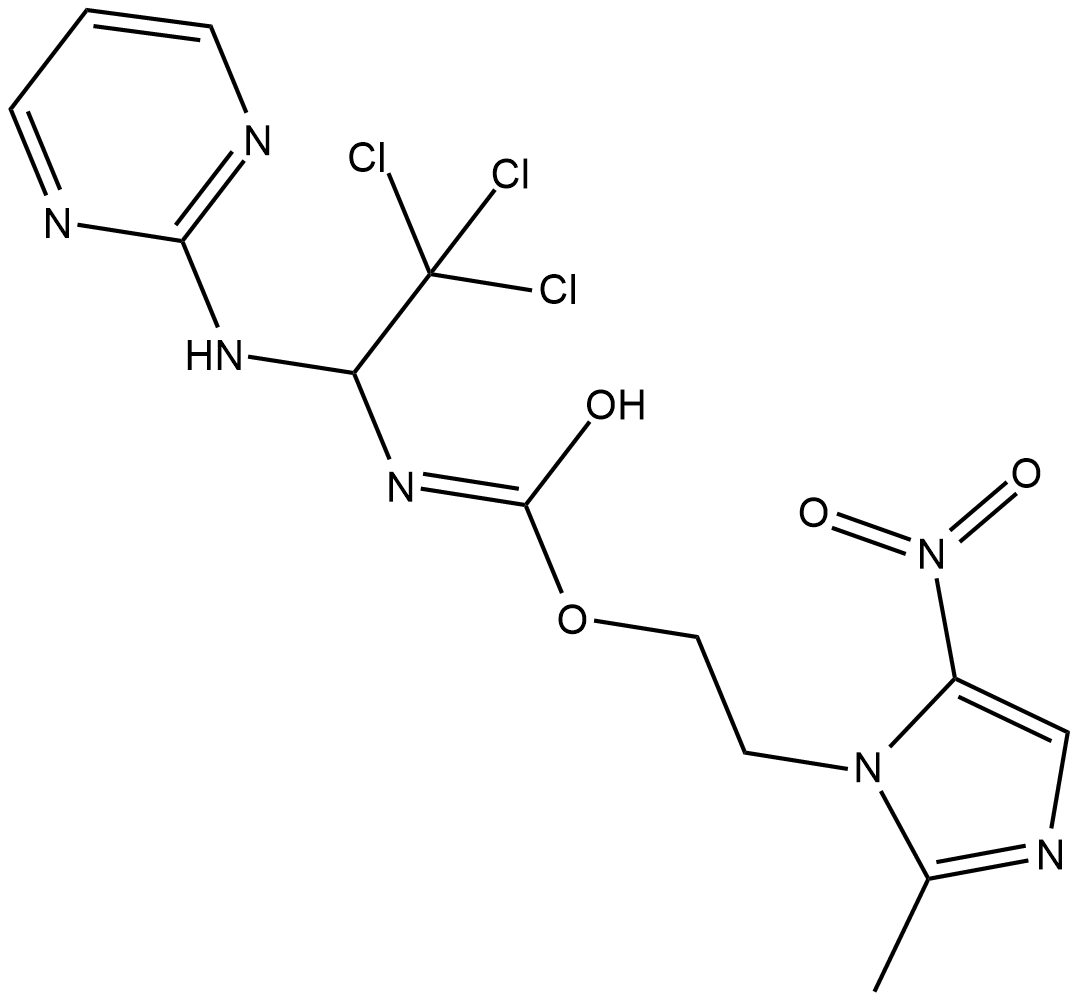
-
GC62419
Apcin-A
Apcin-A ، أحد مشتقات Apcin ، هو مثبط معقد معزز الطور (APC)يتفاعل Apcin-A بقوة مع Cdc20 ، ويمنع انتشار ركائز Cdc20يمكن استخدام Apcin-A لتركيب PROTAC CP5V
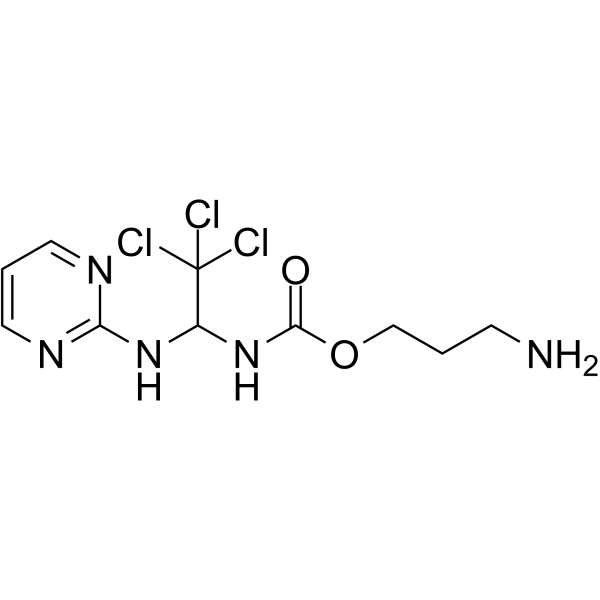
-
GC35367
APG-115
APG-115 (APG-115) هو مثبط بروتين MDM2 نشط عن طريق الفم يرتبط ببروتين MDM2 بقيم IC50 و Ki البالغة 3.8 نانومتر و 1 نانومتر ، على التوالي. يمنع APG-115 تفاعل MDM2 و p53 ويحث على إيقاف دورة الخلية وموت الخلايا المبرمج بطريقة تعتمد على p53.
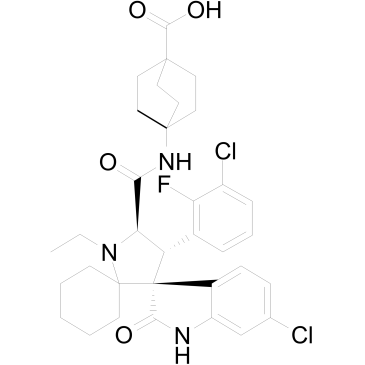
-
GC62640
APG-1387
APG-1387 ، محاكي SMAC ثنائي التكافؤ ومضاد IAP ، يمنع نشاط بروتينات عائلة IAPs (XIAP و cIAP-1 و cIAP-2 و ML-IAP)يؤدي APG-1387 إلى تدهور بروتينات cIAP-1 و XIAP ، بالإضافة إلى تنشيط caspase-3 وانقسام PARP ، مما يؤدي إلى موت الخلايا المبرمجيمكن استخدام APG-1387 في أبحاث سرطان الخلايا الكبدية وسرطان المبيض وسرطان البلعوم الأنفي
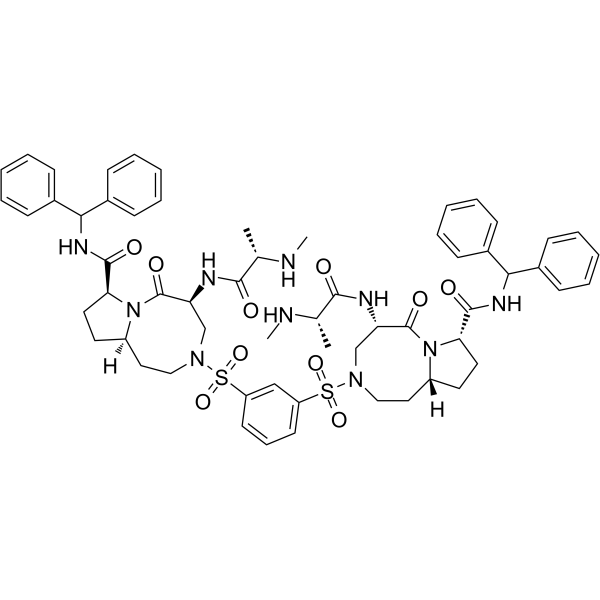
-
GC12961
Apicidin
مثبط HDAC الذي يخترق الغشاء الخلوية
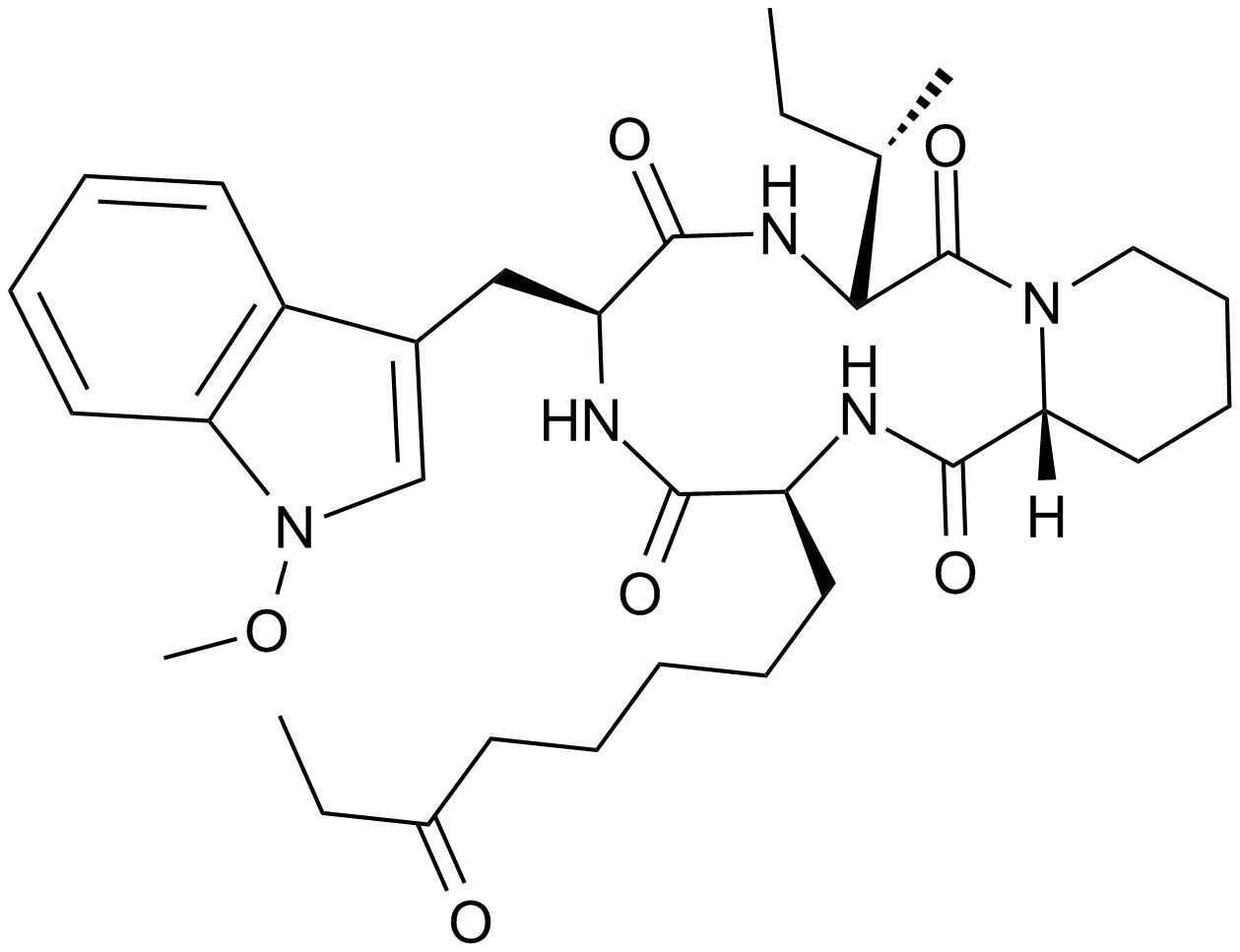
-
GC46862
Apigenin-d5
An internal standard for the quantification of apigenin

-
GC16237
Apocynin
Apocynin هو مثبط انتقائي لـ NADPH- أوكسيديز مع IC 50 من 10 ميكرومتر
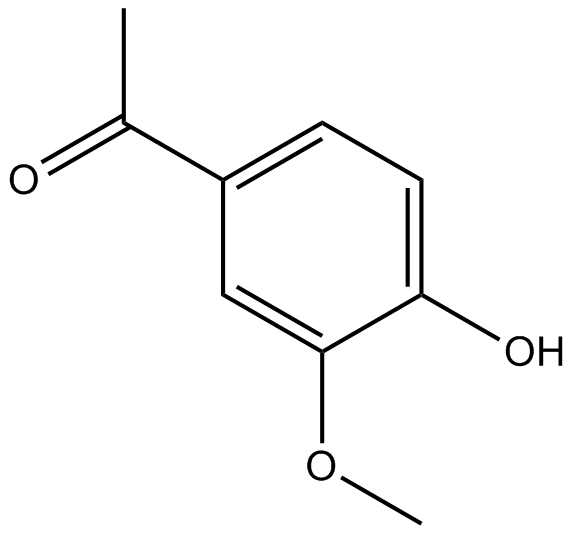
-
GC14080
Apogossypolone (ApoG2)
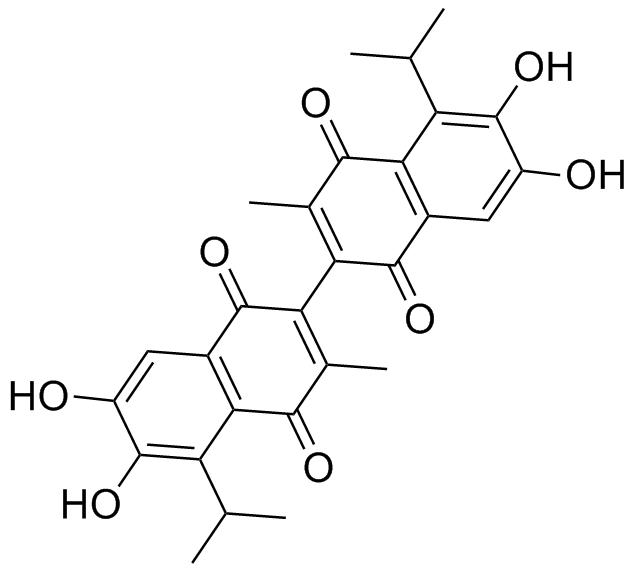
-
GC42827
Apoptolidin
Apoptolidin هو بولي كيتيد معزول من بكتيريا NocardiopsisApoptolidin هو مثبط انتقائي للميتوكوندريا F1FO ATPaseApoptolidin هو محفز لموت الخلايا المبرمج ويحث على موت الخلايا المبرمج في الخلايا المتحولة مع الجينات الورمية من النوع 12 من الفيروسات الغدية بما في ذلك ElA (IC50 = 10-17 نانوغرام / مل) ولكن ليس في الخلايا الطبيعية

-
GC14209
Apoptosis Activator 2
An activator of caspases
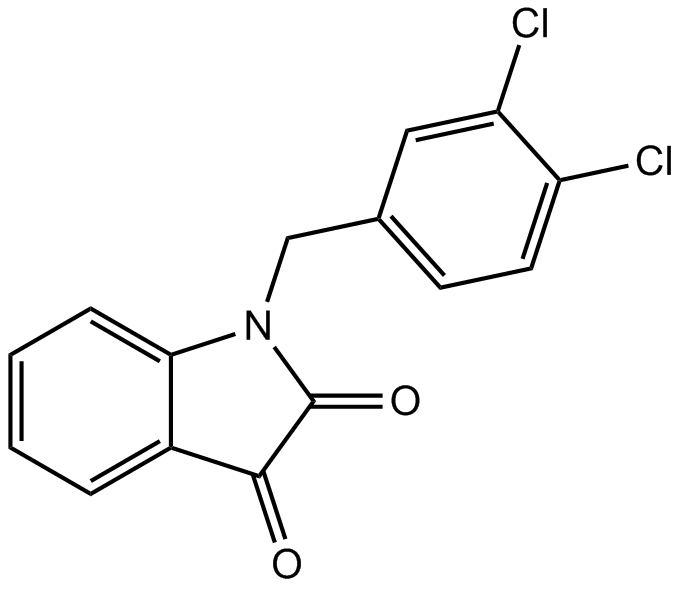
-
GC14411
Apoptozole
Apoptozole (Apoptosis Activator VII) هو مثبط لنطاق ATPase لـ Hsc70 و Hsp70 ، مع Kds من 0.21 و 0.14 ميكرومتر ، على التوالي ، ويمكن أن يحفز موت الخلايا المبرمج
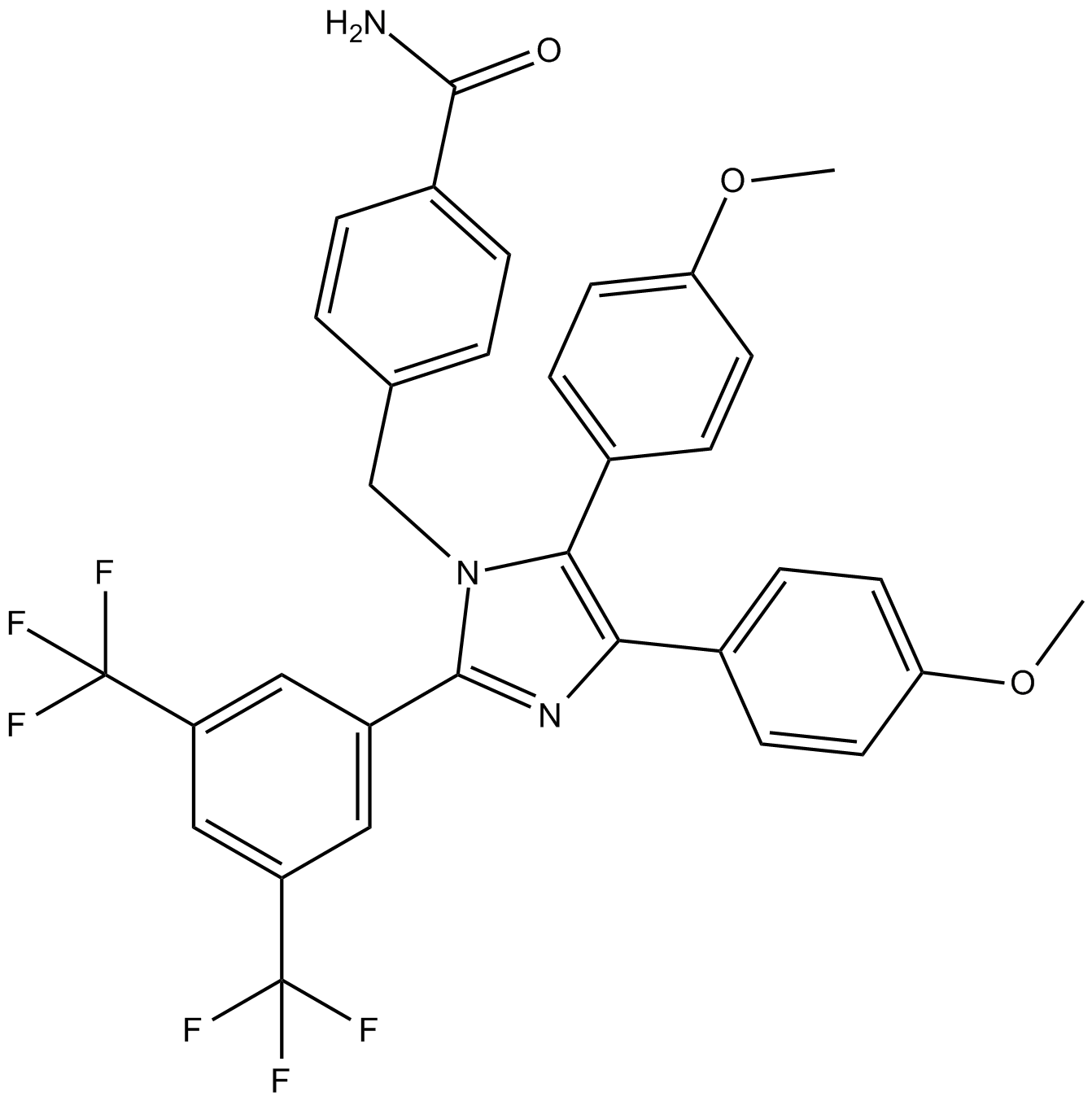
-
GC65004
Apostatin-1
Apostatin-1 (Apt-1) هو مثبط قوي لـ TRADD
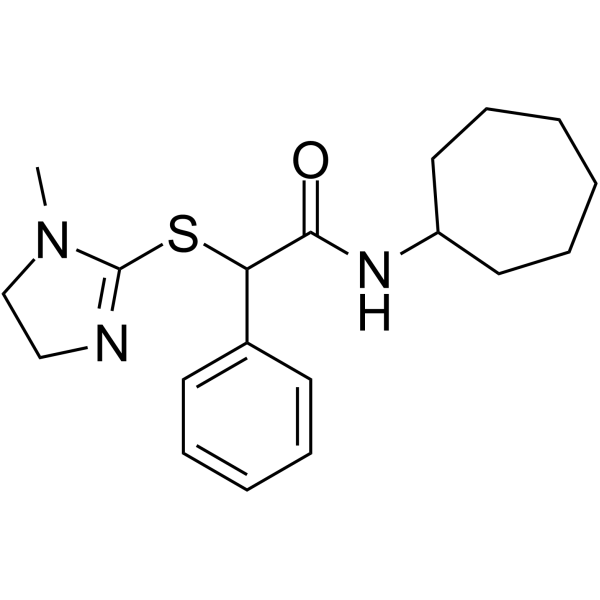
-
GC35377
Apratastat
Apratastat (TMI-005) هو مثبط TACE / MMPs نشط عن طريق الفم وغير انتقائي وقابل للانعكاس ، ويمكن أن يمنع إطلاق TNF-αلدى Apratastat القدرة على التغلب على مقاومة العلاج الإشعاعي لسرطان الرئة ذو الخلايا غير الصغيرة (NSCLC)
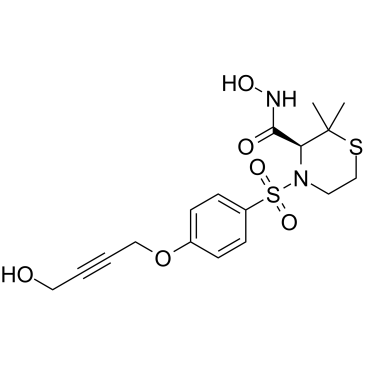
-
GC10420
Apremilast (CC-10004)
An orally available PDE4 inhibitor
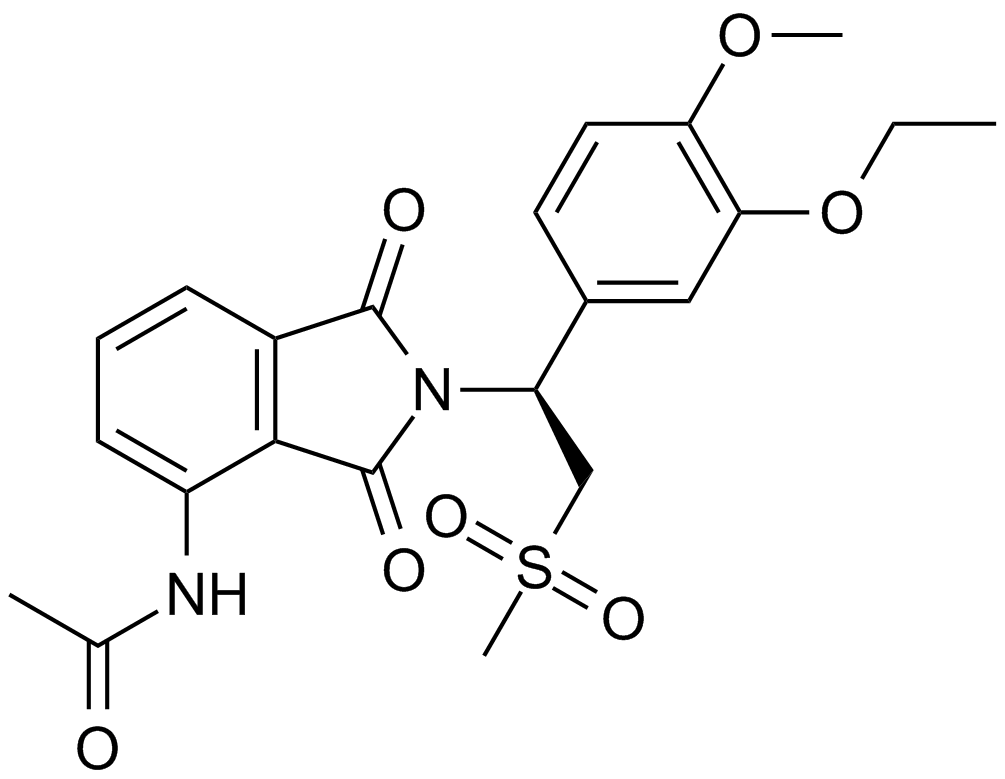
-
GC32692
APTO-253 (LOR-253)
APTO-253 (LOR-253) (LOR-253) هو جزيء صغير يثبط تعبير c-Myc ، ويثبت الحمض النووي لـ G-quadruplex ، ويحث على توقف دورة الخلية وموت الخلايا المبرمج في خلايا سرطان الدم النخاعي الحاد.
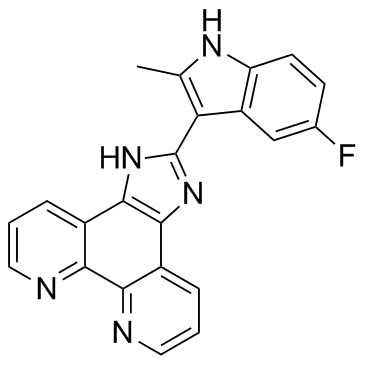
-
GC14590
AR-42 (OSU-HDAC42)
HDAC inhibitor,novel and potent
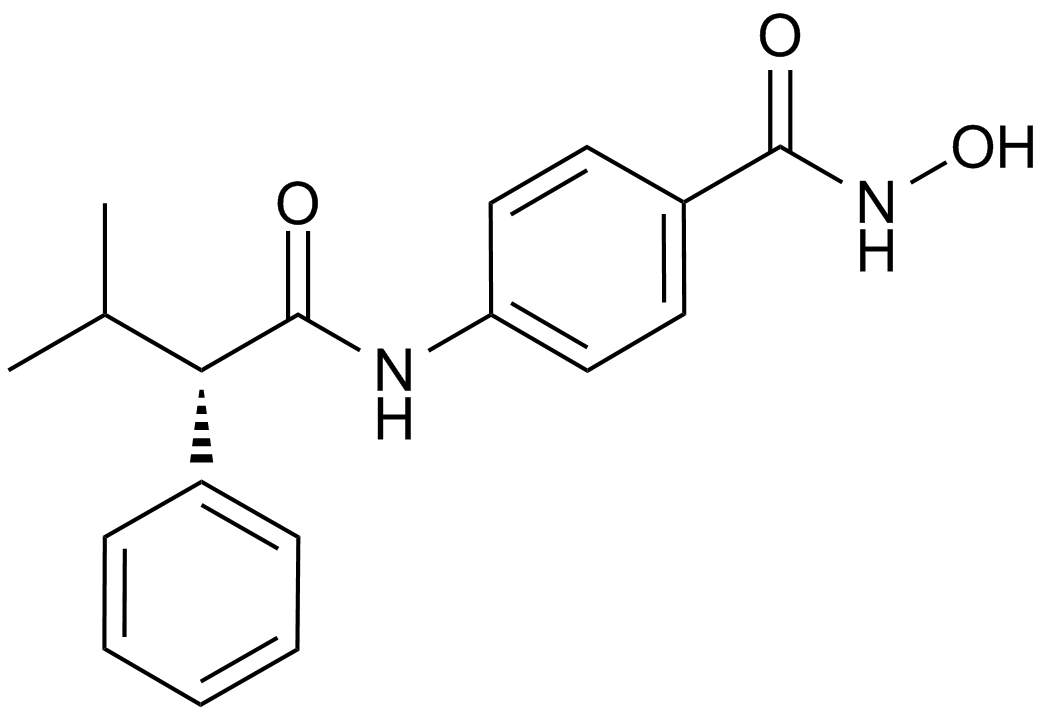
-
GC45385
Ara-G

-
GC46878
Aranciamycin
A fungal metabolite with diverse biological activities

-
GC40116
Aranorosin
تم عزل Aranorosin ، وهو مضاد حيوي قوي مضاد للفطريات ، من ترشيح الثقافة والفطريات لسلالة Pseudoarachniotus roseus Kuehn

-
GC65163
Ardisiacrispin B
يعرض Ardisiacrispin B التأثيرات السامة للخلايا في الخلايا السرطانية المقاومة للأدوية متعددة العوامل عن طريق موت الخلايا المبرمج وموت الخلايا المبرمج
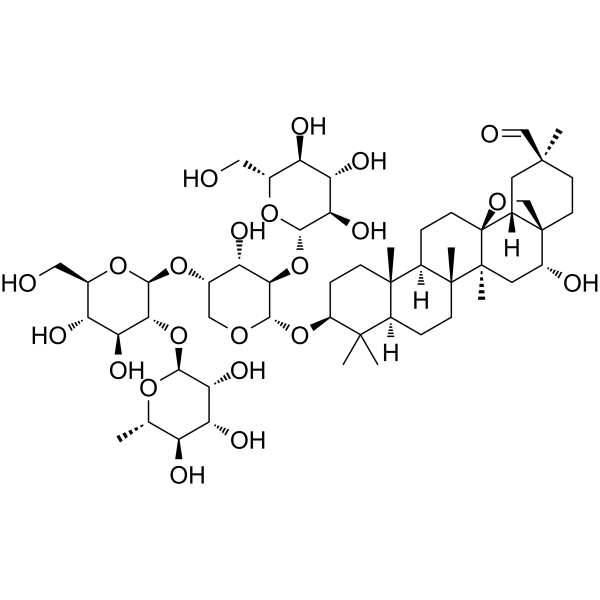
-
GC49314
Arecaidine propargyl ester (hydrobromide)
A muscarinic M2 agonist

-
GC35388
Aristolactam I
Aristololactam I (AL-I) ، هو المستقلب الرئيسي لحمض الأرستولوكيك الأول (AA-I) ، ويشارك في العمليات التي تؤدي إلى تلف الكلى
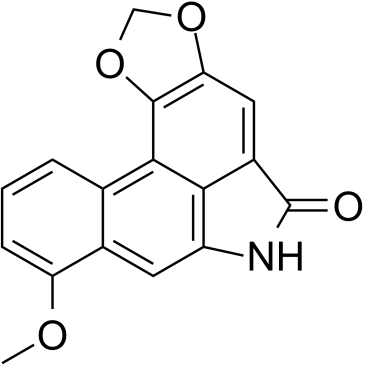
-
GC35395
Arnicolide D
Arnicolide D هو لاكتون سيسكيتيربين معزول من Centipeda minimaيعدل Arnicolide D دورة الخلية وينشط مسار إشارات caspase ويمنع مسارات إشارات PI3K / AKT / mTOR و STAT3Arnicolide D يثبط بقاء خلايا سرطان البلعوم الأنفي (NPC) بطريقة تعتمد على التركيز والوقت
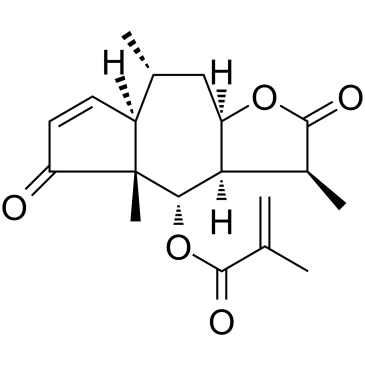
-
GC19037
ARS-853
ARS-853 هو مثبط نشط للخلايا وانتقائي وتساهمي KRAS G12C مع IC 50 من 2.5 ميكرومتريثبط ARS-853 الإشارات التي تحركها KRAS المتحولة من خلال الارتباط بالبروتين الورمي المرتبط بالناتج المحلي الإجمالي ومنع التنشيط
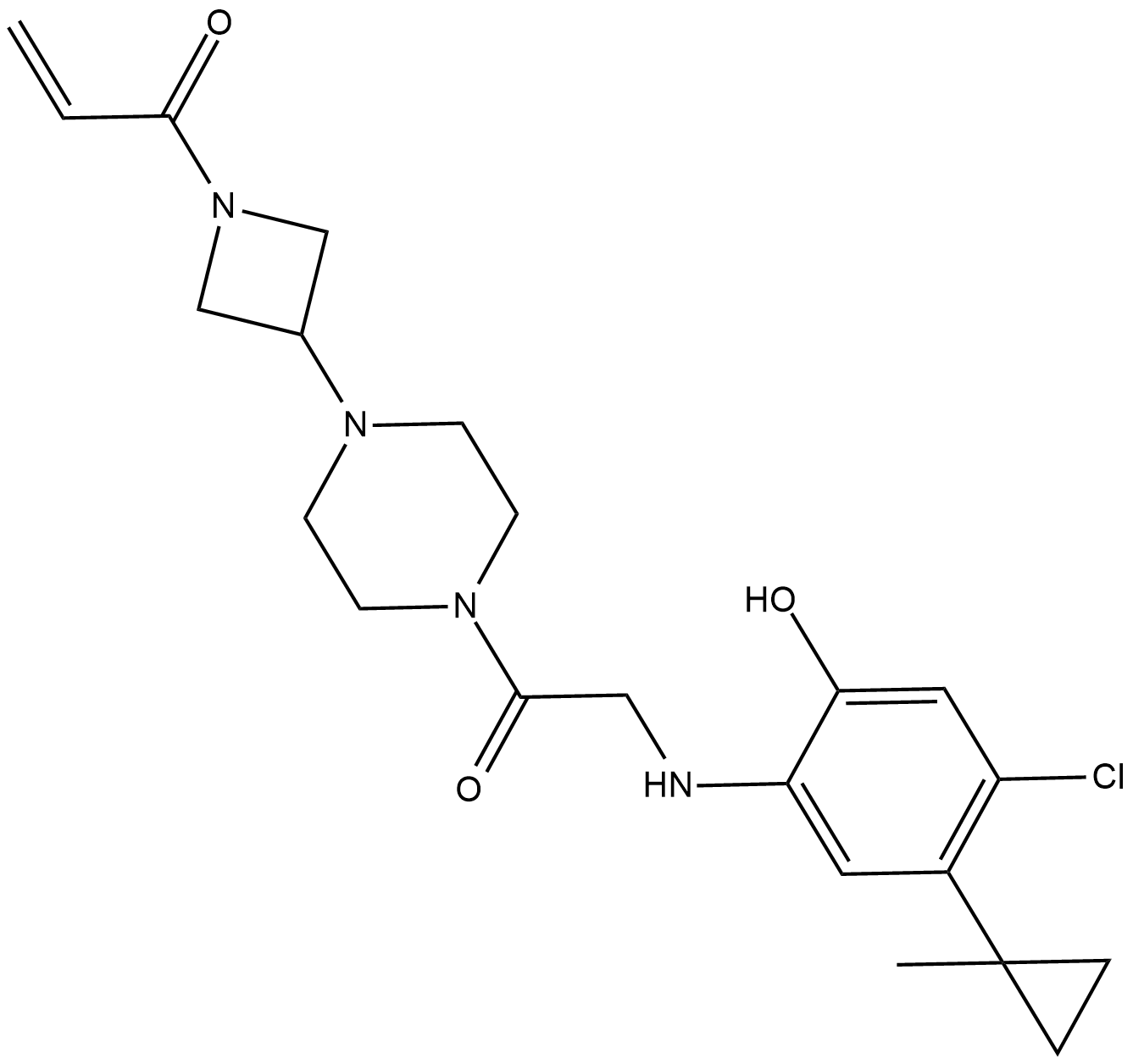
-
GC46882
Artemisinin-d3
An internal standard for the quantification of artemisinin

-
GC10040
Arylquin 1
يستهدف أريلكوين 1 ، وهو أحد البروستاتا - الاستجابة للاستماتة - 4 (بار -4) ، الفيمنتين للحث على إفراز بار -4يحث أريلكوين 1 على موت الخلايا غير المبرمج في الخلايا السرطانية من خلال تحريض نفاذية الغشاء الليزوزومي (LMP)
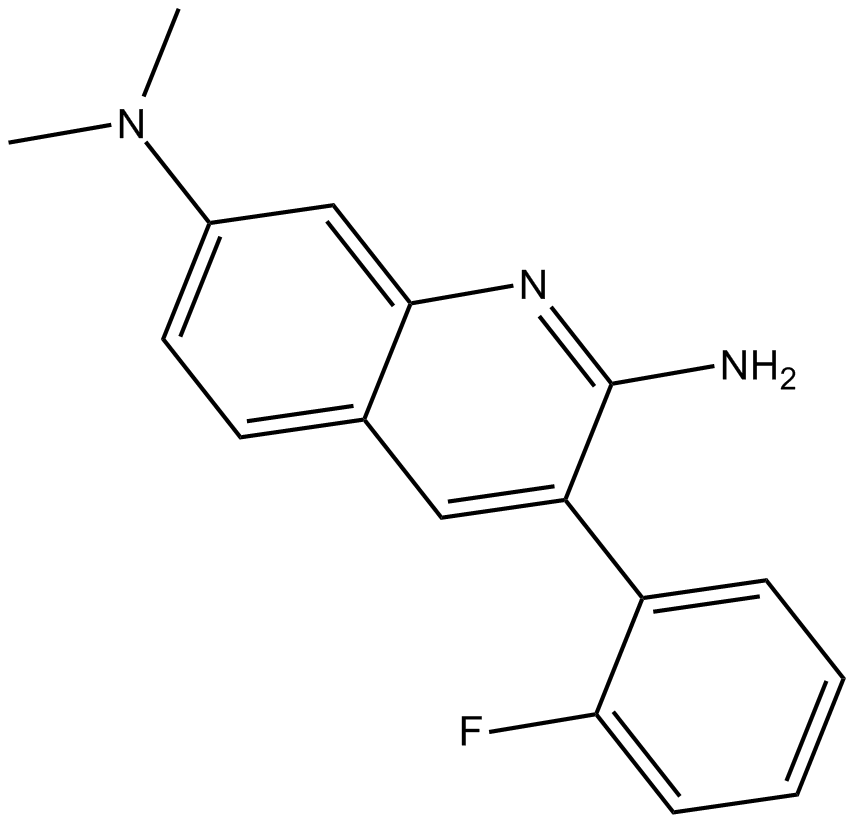
-
GC62615
AS-99
AS-99 هو مثبط ASH1L هيستون ميثيل ترانسفيراز هو الأول في فئته وقوي وانتقائي (IC50 = 0.79μ ؛ M ، Kd = 0.89μ ؛ M) مع نشاط مضاد لسرطان الدم. يمنع AS-99 تكاثر الخلايا ، ويحفز موت الخلايا المبرمج والتمايز ، ويقلل من تنظيم الجينات المستهدفة من اندماج MLL ، ويقلل من عبء اللوكيميا في الجسم الحي.
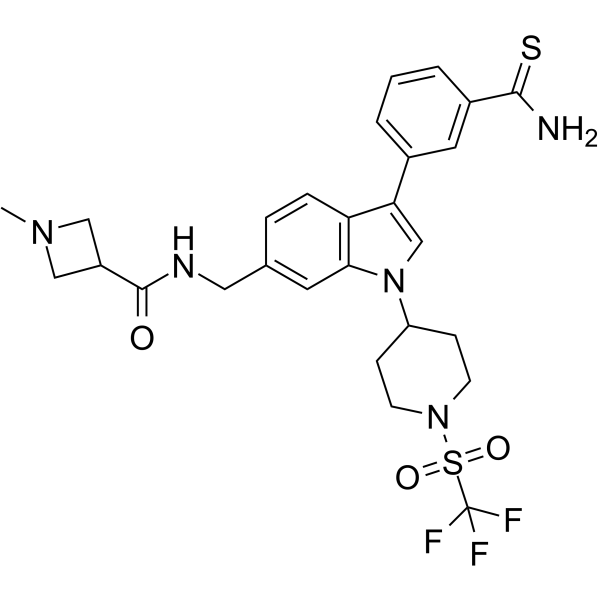
-
GC40715
Ascochlorin
Ascochlorin (Ilicicolin D) ، مضاد حيوي إيزوبرينويد ، يتوسط تأثيراته المضادة للورم في الغالب من خلال قمع سلسلة إشارات STAT3

-
GC13215
Ascomycin(FK 520)
A potent macrolide immunosuppressant
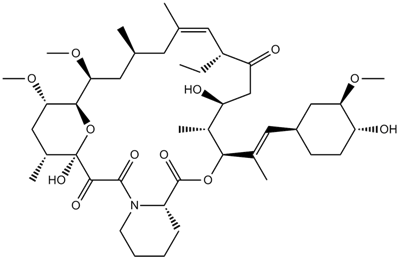
-
GC12070
Ascorbic acid
مانح إلكترونات
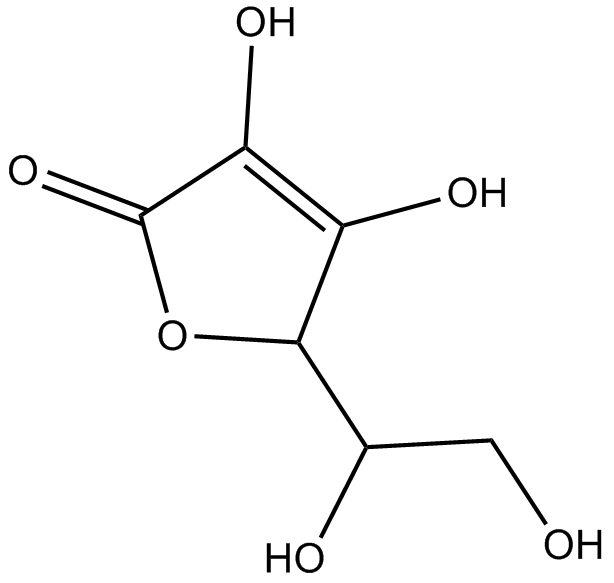
-
GN10702
Asiatic acid
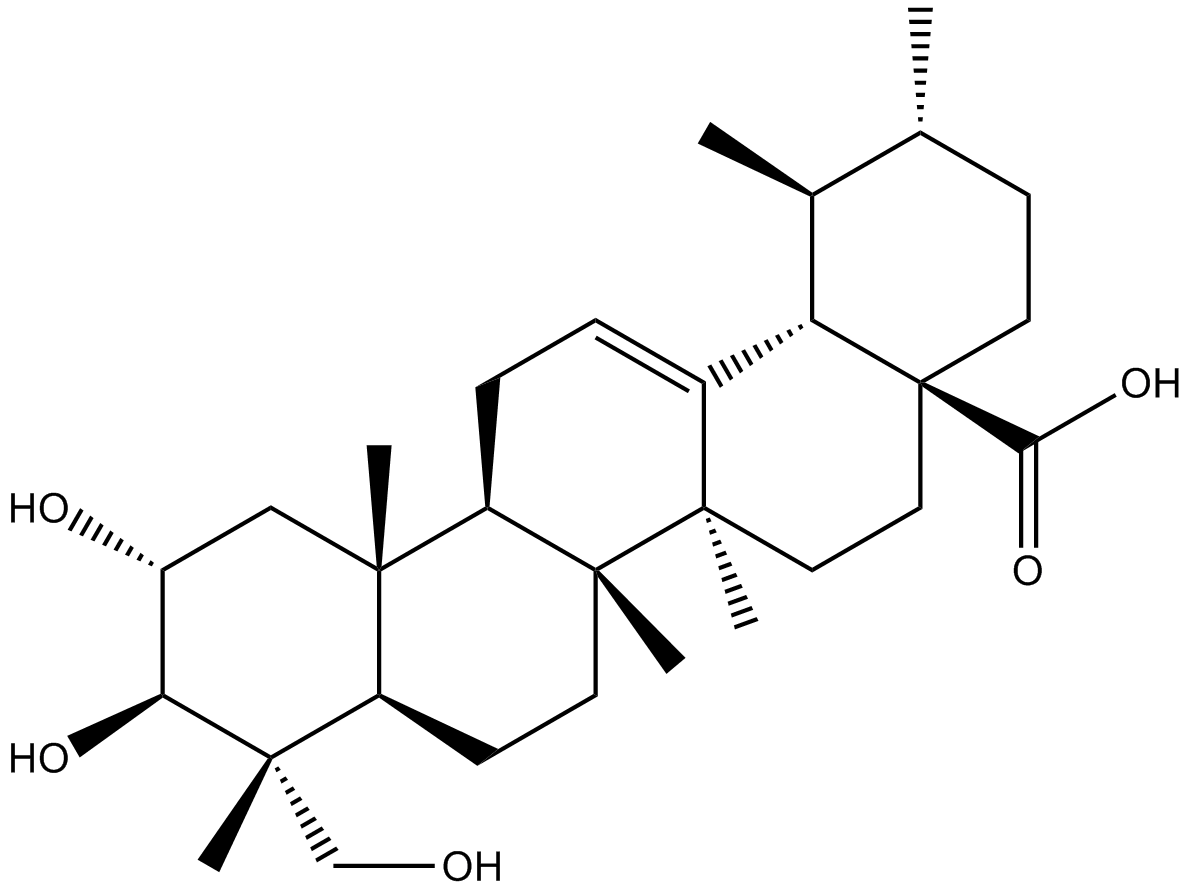
-
GN10534
Asiaticoside
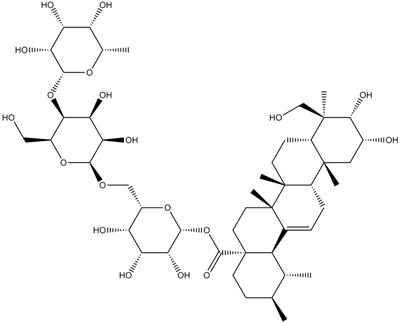
-
GC19041
ASK1-IN-1
ASK1-IN-1 هو مثبط قوي ، ومتاح عن طريق الفم وانتقائي من ATP للكيناز 1 المنظم لإشارات موت الخلايا المبرمج (ASK1) مع IC50 من 2.87 نانومتر.
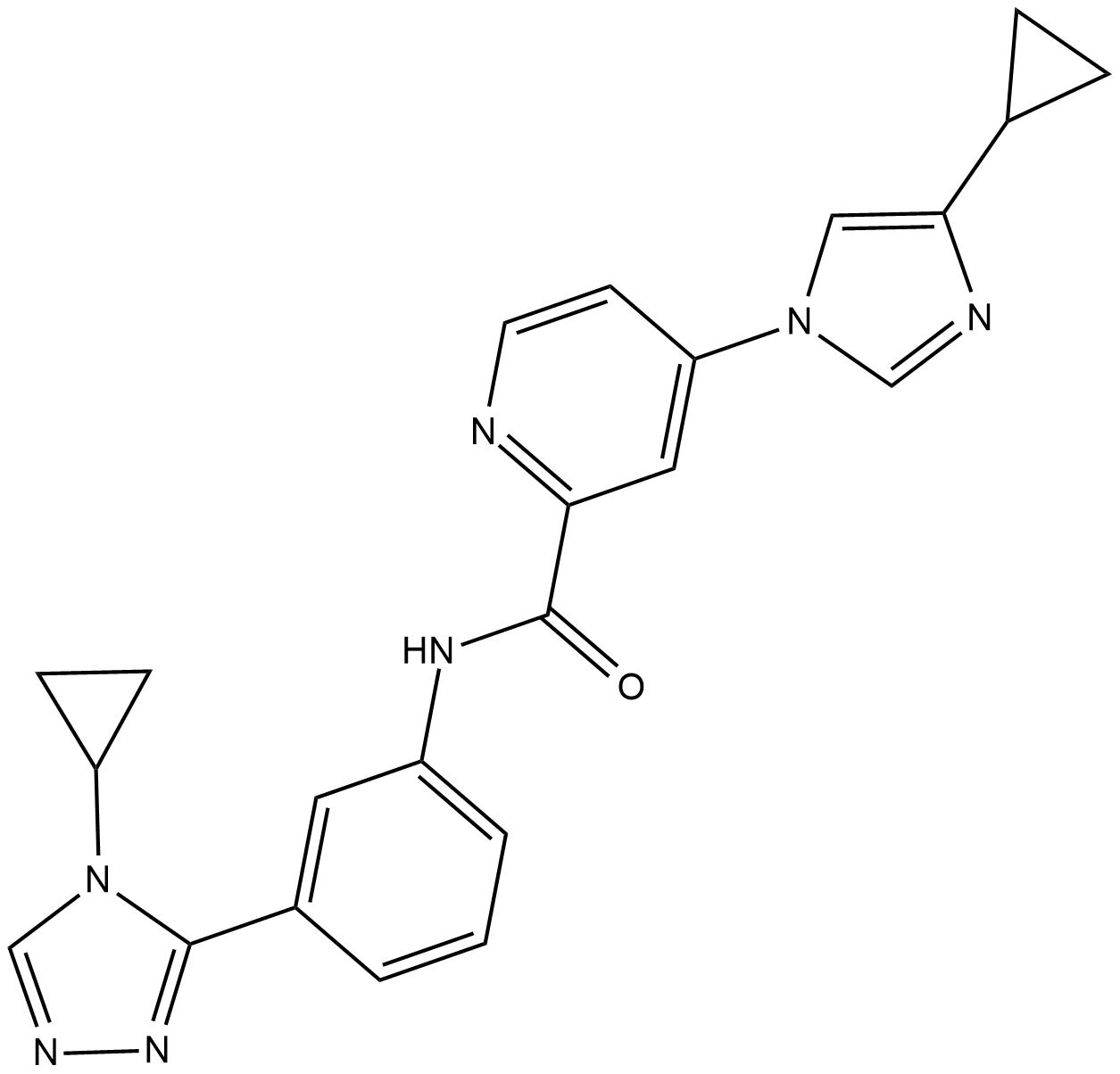
-
GC62426
ASK1-IN-2
ASK1-IN-2 هو مثبط قوي وفعال عن طريق الفم للكيناز 1 المنظم لإشارات موت الخلايا المبرمج (ASK1) ، مع IC50 من 32.8 نانومتر
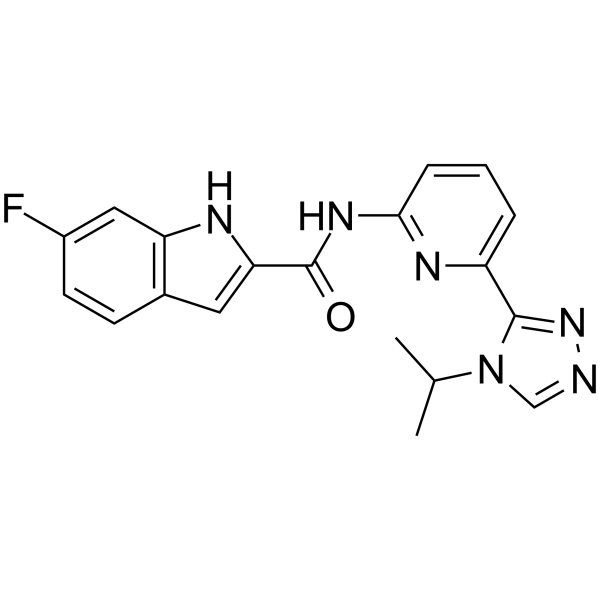
-
GC42858
Aspergillin PZ
Aspergillin PZ هي رواية isoindole-alkaloid من Aspergillus awamori

-
GN10064
Asperosaponin VI
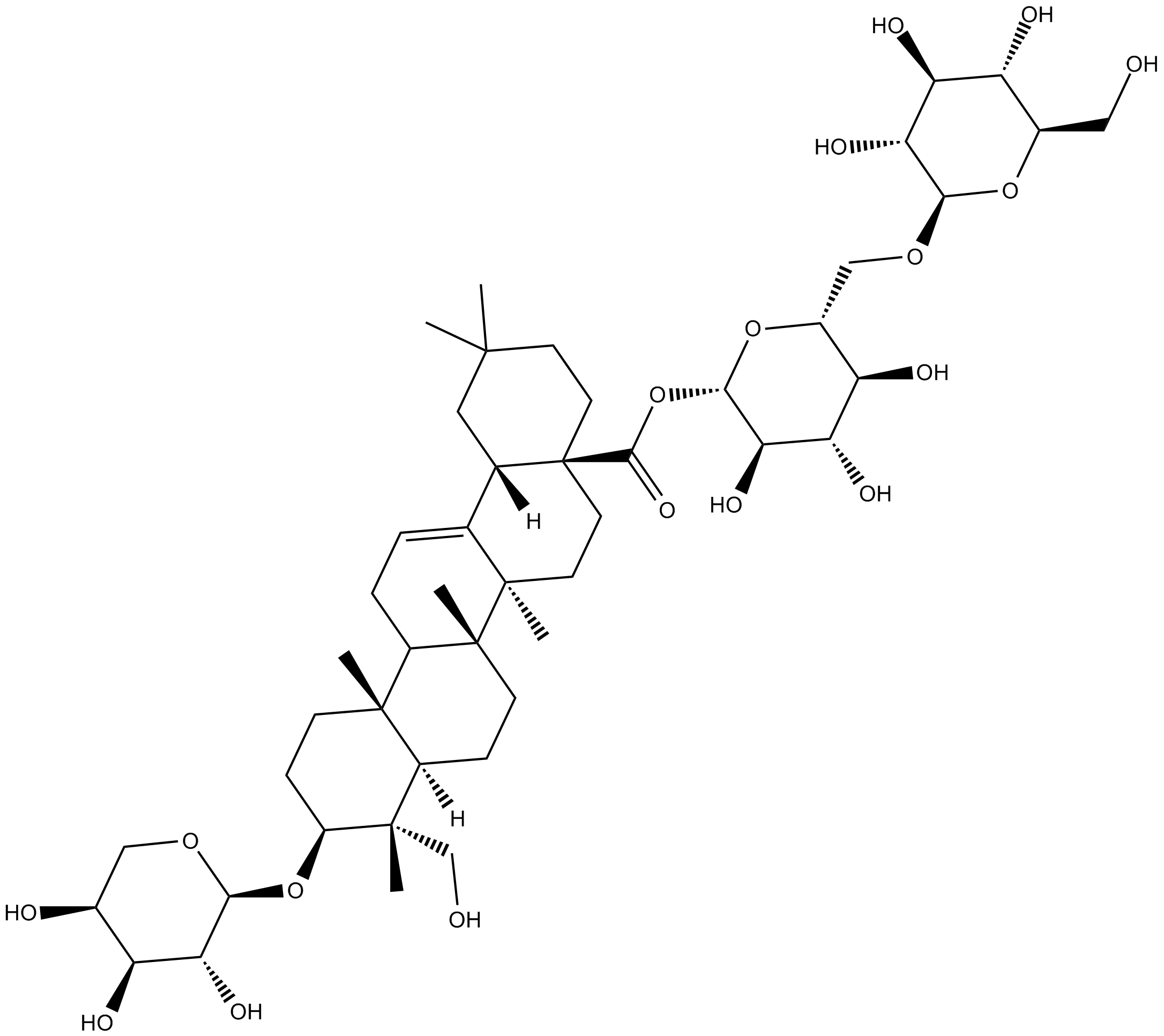
-
GC60603
Asperosaponin VI
A triterpenoid saponin with diverse biological activities
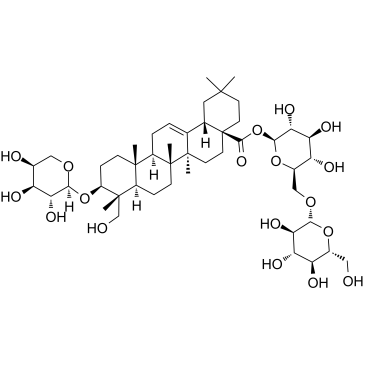
-
GC42860
Aspochalasin D
Aspochalasin D is a co-metabolite originally isolated from A.

-
GC41640
Asterriquinol D dimethyl ether
Asterriquinol D ثنائي ميثيل الأثير هو مستقلب فطري ، يمكن أن يمنع خطوط خلايا المايلوما الفأرية NS-1 مع IC 50 من 28 ميكروغرام / مل

-
GN10415
Astilbin
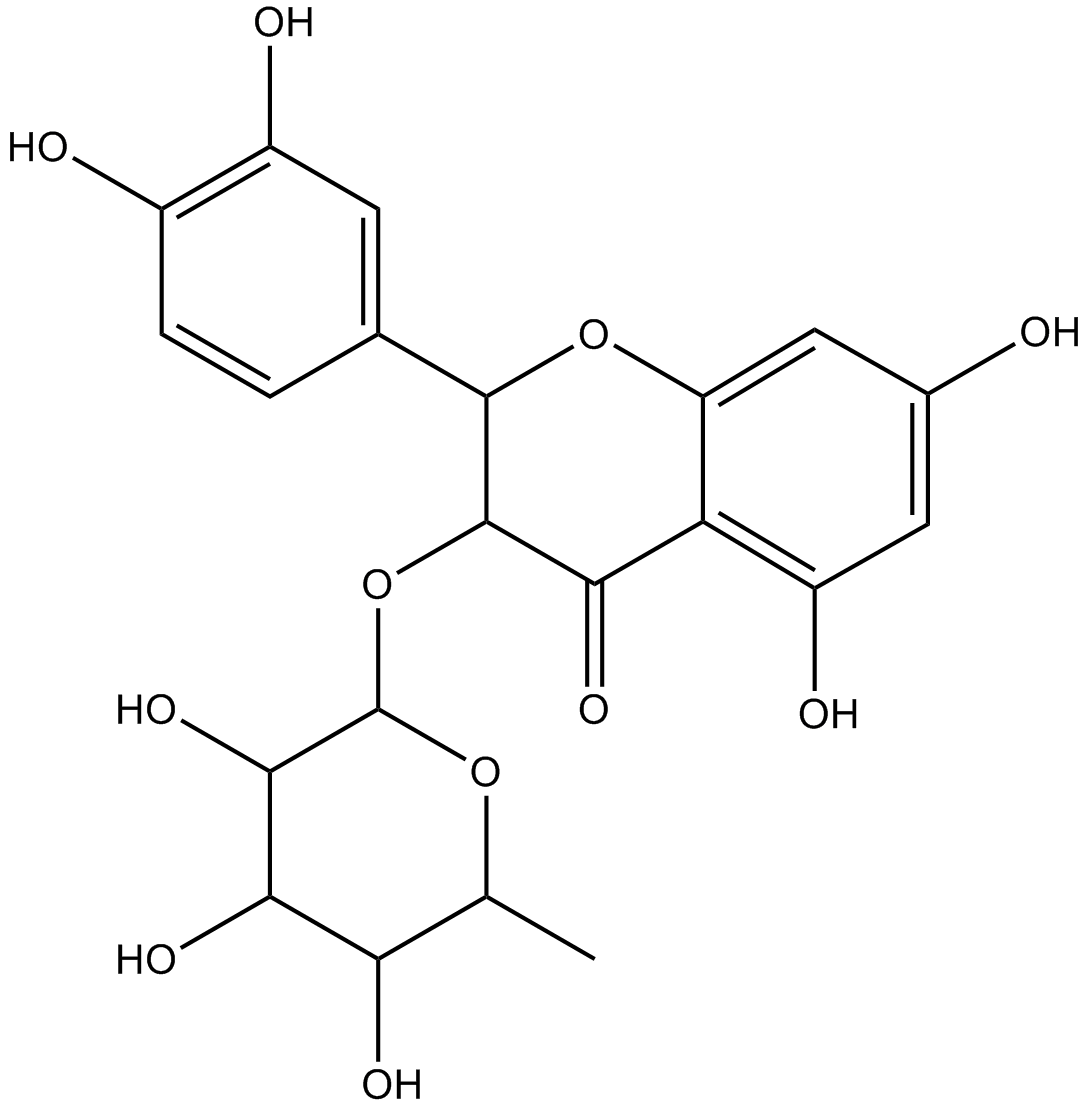
-
GN10561
astragalin
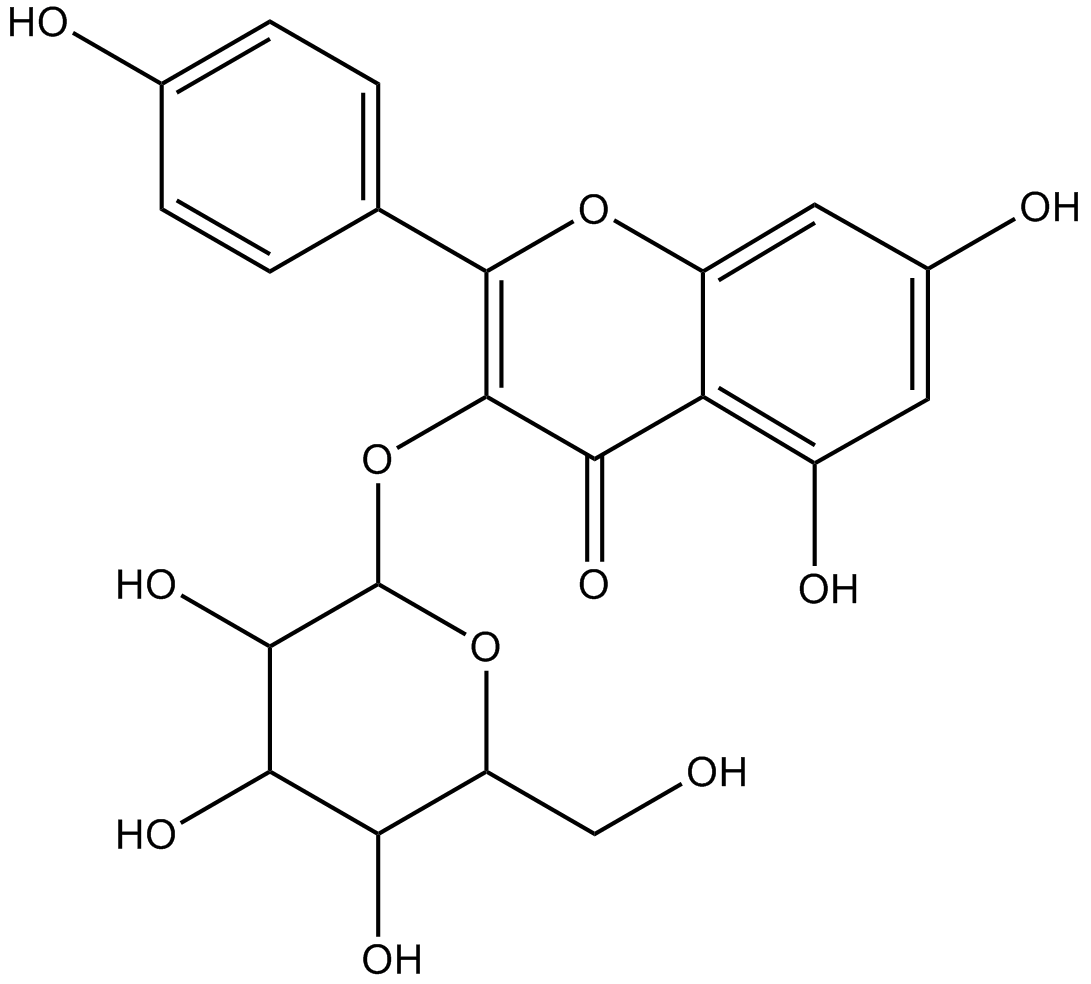
-
GC18109
Astragaloside A
anti-hypertension, positive inotropic action, anti-inflammation, and anti-myocardial injury
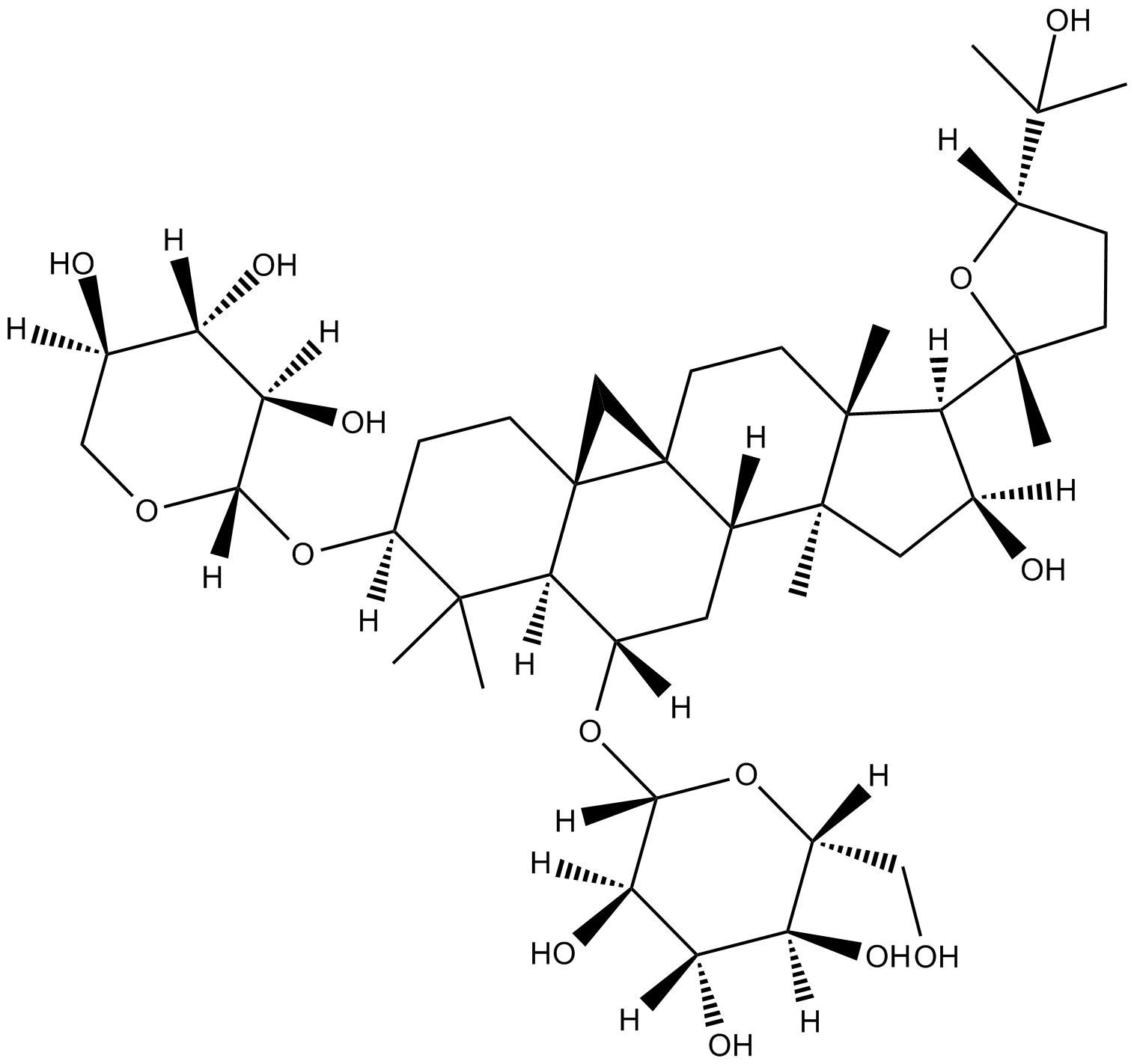
-
GC35415
Astramembrangenin
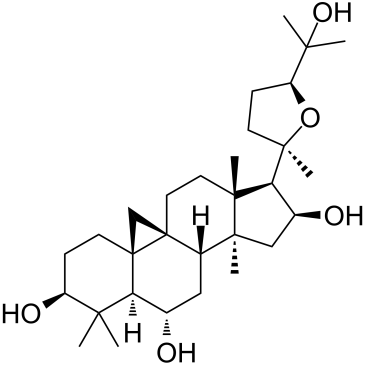
-
GC32803
ASTX660
ASTX660 هو مضاد ثنائي متوفر بيولوجيًا عن طريق الفم لمثبط خلوي لبروتين موت الخلايا المبرمج (cIAP) ومثبط X لبروتين موت الخلايا المبرمج (XIAP)
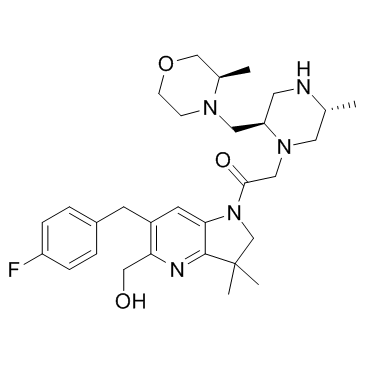
-
GC42863
Asukamycin
Asukamycin is polyketide isolated from the S.

-
GC11106
AT-101
